Vampire: The Dark Ages: 20th Anniversary Edition by RocknRollaAyatollah
Preface
Original SA post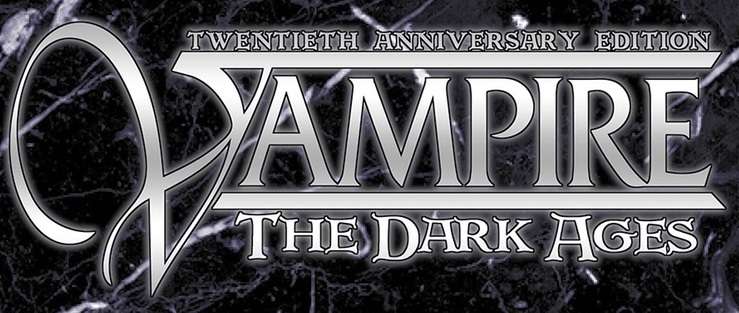
Preface
One of the main reasons I’m writing this review is that I feel that this is an amazing product and probably one of the best Old World of Darkness products released. I think it’s important to highlight a good, recent World of Darkness product that updates on original material while making progressive improvements to the source material and to the presentation of the setting. This review will mainly focus on the fluff, presentation, and setting than the mechanics, though I will address them. It’s still an Old World of Darkness game so if you know what that means, you know how the mechanics breakdown.
I want to note as well that this is a product of Onyx Path Publishing, not White Wolf. Although former White Wolf writers wrote for this line, it is a product of a distinct, separate company that licenses material from White Wolf, which up until very recently was nothing more than an IP holding company under CCP, the makers of EVE Online. These Monday meeting notes from Onyx Path gives you more of a rundown of the history of the two companies (http://theonyxpath.com/bucking-bron...-meeting-notes/).
After clearing that up, I think you should fully support Onyx Path and their writers if you like what they’re doing and know that giving them money or work is not supporting some of the most toxic elements in the RPG industry. OPP has made some mistakes along the way, Beast in my opinion to name one, but they are still light years ahead of some of their contemporaries.
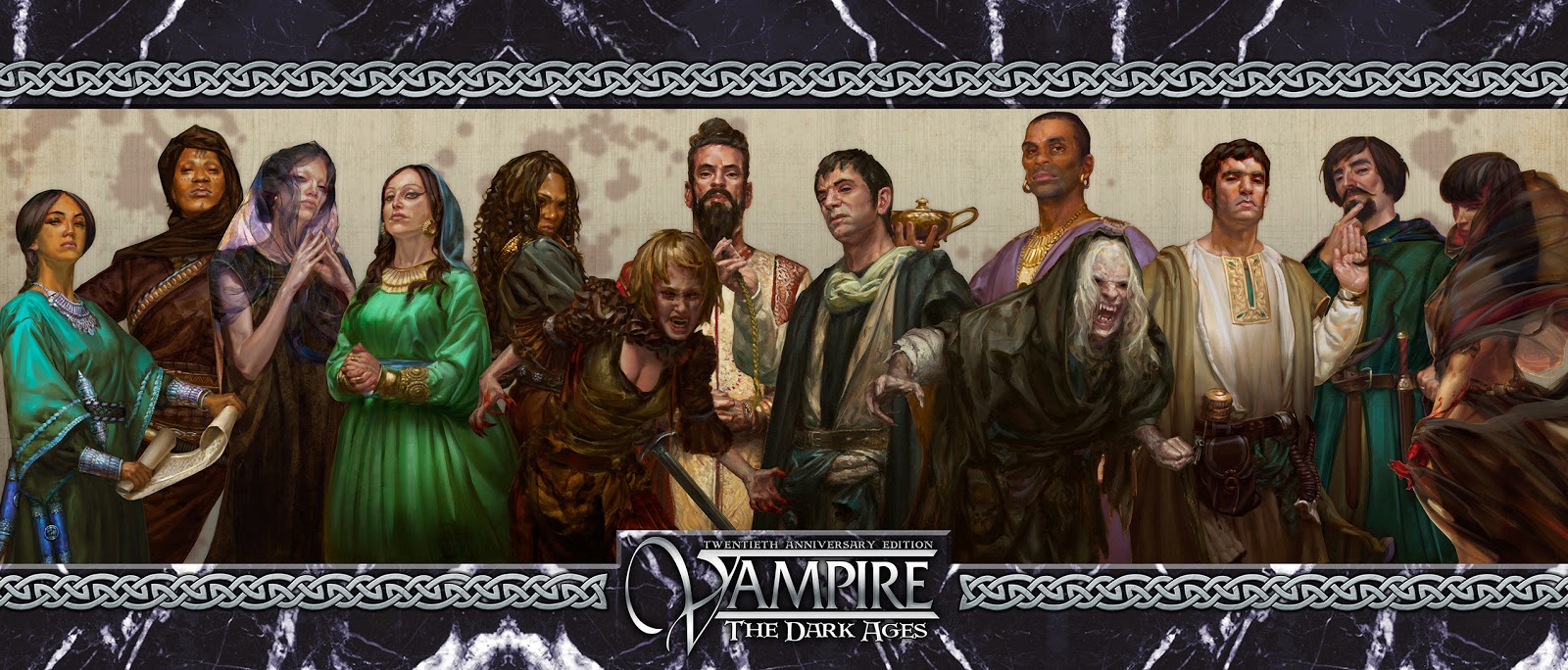
This diverse set of characters is not only inclusive but also historically accurate and shows the geographic range that they cover in the book.
The Dark Ages
The Dark Ages line is a line of books put out for the Old World of Darkness lines that take place during the Middle Ages. V20 Dark Ages Vampire takes place in 1242 CE. The original book, Vampire: The Dark Ages was set in 1197 CE and Dark Ages: Vampire moved the date to 1230 CE. Although this book is a comprehensive treatment of the Dark Ages Vampire line, it does move the timeline forward. Werewolf, Mage, and Changeling received Dark Ages treatment books, Werewolf even had two editions, but this review will focus on V20 Dark Ages Vampire.
In many ways this setting is set in the period of time in the World of Darkness before everything went to shit for the major supernaturals in the setting. Vampires at this point are not bound by the masquerade and no sects exist as they do during modern times. The political power structures of the time don’t really extend beyond fiefdoms ruled by princes and some vampires even dare to live openly, although the inquisition, mortal mobs, and other supernaturals often put an end to this brazen behavior. Werewolves exist as they do in modern times but are missing the Native American tribes. Mages exist in broader, looser schools of magic and the Traditions and Technocracy don’t exist yet. Changelings don’t exist as they do in modern times, instead they are beings of pure glamour and inhabit the wild areas outside of humanity. Demons do not exist outside of the occasional earthbound demon and hunters are nonexistent due to being a product of end times prophecy. It is not uncommon to have elders who lived during the Roman Empire and the breakthroughs made during the Renaissance haven’t happened, which brought paradox and banality down on Mages and the Fae. It is largely a dark time for mankind relative to modern times but this turns out to be quite good for all the supernaturals in the World of Darkness.
I personally enjoy this setting a great deal and I think the creators of V20 Dark Ages did a great job in making these books. The writing is great and the artwork is beautiful. The deluxe core book even looks like the complete Sandman omnibus releases.
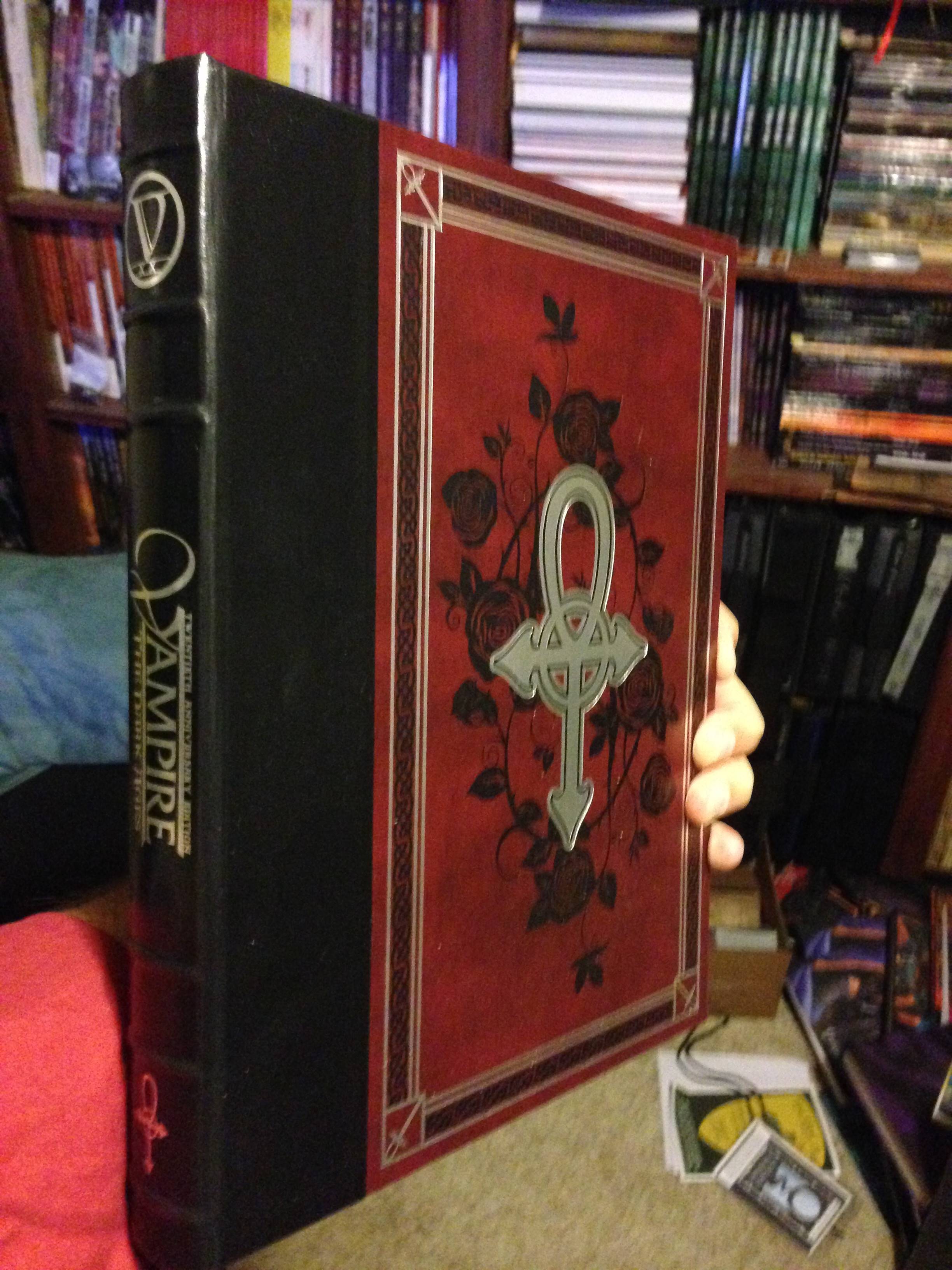
Not my own picture, I only got it at the PDF level due to monetary constraints when the Kickstarter was live.
I will try to do at least one post a week for this book and I will move on to the Tome of Secrets when it's done. V20 Dark Ages Companion will follow that when it's done but it's at art direction at the moment.
Introduction
Original SA post
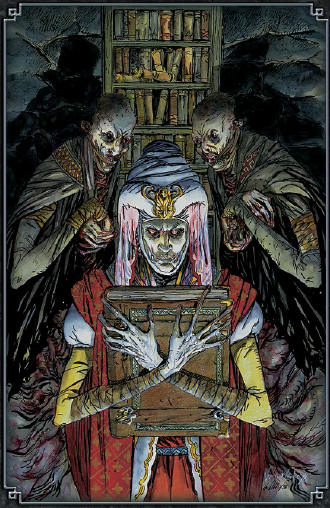
Introduction
The introduction for this book follows the standard White Wolf/Onyx Path model for a core book. It lays out that this is a book for not only a fan of Vampire and Dark Ages but also for someone new. It also points out that they’re offering a new take on a lot of old White Wolf concepts and they do deliver on this.
The book does the usual of breaking down what traits OWoD vampires have relative to myths, nothing really groundbreaking or different. Vampires in the OWoD are relatively immortal, have to choose who they make vampires, and are damaged by the sun. They bring up the beast and the concept of the embrace but do a good job of laying down the basics. They do detail vampires and sex, which is a given since vampires are essentially magical rapists from Eastern Europe in Dracula, this is a given within the Western literary canon.
They do have a sidebar box in this section that lets you know that some powers are different from previous editions but you’re free to substitute in disciplines ranks for instance if you like the previous iteration of the power better than the new one.
The book does point out at this point that vampires in Europe consider themselves the spawn of Caine. This is not that crazy because most medieval Europeans are versed in the Bible, at least in a broad concept and story sense, and they believe it’s the history of the world up until their time. Caine, cursed by God to wander the Earth for eternity for committing the murder beget his children and they beget the Antediluvians, the founders of the clans.
Editorial Note:
In modern Vampire, only the Sabbat openly acknowledge this. The Camarilla refer to themselves as "kindred" and shun all talk of Caine because they claim it’s baseless superstition. The elders of the Camarilla know otherwise but do this to cover up the truth because they know the signs are all there and the world may possibly be ending. There’s also a lot of shit that went down related to Caine veneration and it led to the Anarch Revolts and the formation of the Sabbat. They honestly want to nip all that talk in the bud before someone fucks everything up.
The embrace is touched on in very brief terms after this and the hunt is detailed. The hunt is different for every vampire and for some just feeding on passed out drunks is enough but for others, they require more like a herd of mortals or a cult that they feed on.
As a source material recommendation, they mainly recommend The Crusades by Terry Jones, the Mony Python one. I do not believe I’ve read this one, I read a couple similarly titled works for an undergrad class but the professor didn’t point it out. He probably would have because we watched El Cid and he pointed out Herbert Lom, Chief Inspector Dreyfus from the Pink Panther movies, as the villain and I feel that would be something he’d mention since that’s a far reach for a class of college students in the mid-aughts. The authors do recommend the book because it’s a history that focuses on the common people and for recommending a work of history that isn’t a great man history, they deserve at least some praise.
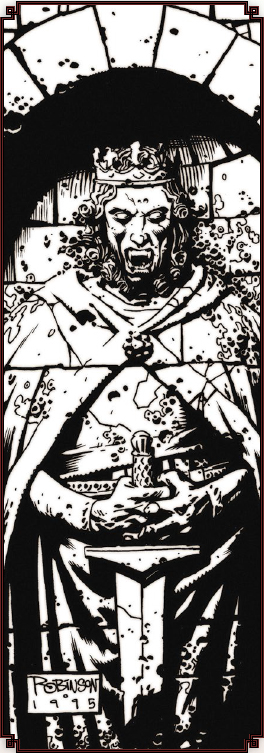
Playing the Game
In this section the author lets the player know that this is their game and they can make it what they want. If you want a world spanning trek, you got it, and if you want an introspective, character driven drama, you got it. You can take the game in any direction and there’s no wrong way to play. They do break it down into the frame of hunger, hunt, feed, digest.
Exposition - The Hunger:
Vampires feel a need to feed themselves but it’s an alien hunger unlike any they experienced in life. This section talks about the importance of food in medieval society quite well and how getting your next meal can mean the difference between life and death in a pre-industrial society. It also talks about the importance of eating as a communal activity and a celebration, which you are now cut off from. Vampires are incapable of consuming food, most can’t even stomach it and vomit it up if they lack the appropriate merit. You have to now answer to your beast, the brutal alien entity within you, and satiate your hunger. It is a hollow, unnatural feeling that you must constantly wrestle with.
Action - The Hunt:
Humans are everywhere and it’s up to a vampire to choose their victims. Some vampires choose to go as long as they can without feeding while others indulge heavily in it. The hunt is much more personal than their hunger because the vampire was once mortal and is now separated from that by undeath. Humans don’t always die once fed upon but it can happen so they must be prepared. It is stressed that it is a complex moral situation that vampires must wrestle with.
Climax – The Feeding:
The feeding is itself not unlike a junkie indulging in their vice, a period of ecstasy that washes away the concerns of the vampire and satiates the beast. The feeding reinforces that the vampire is no longer human, something else, worse and more sinister than their former self. A vampire is never sated though and the hard choices are up to the vampire. The beast makes it harder and harder for the vampire to do anything other than feed and satiate themselves at the expense of humanity.
The Denouement:
Vampires are ultimately junkies for the blood by which they survive. Feeding quiets the beast but takes a great psychological toll on the vampire. They are a parasite and their livelihood comes from the life force of other humans. Vampires deal with it in their own ways, some reject their nature while other embrace it, but all struggle with their condition regardless of their rationalization. There is no escaping this cycle and how a vampire deals with this shapes their character.
This is all and all a good setup. It lets the players know the basics about the game and sets the vampires up as monsters. I think that too often vampire characters are treated as someone with a disability with superpowers. This book makes a good point that vampires are monsters, ruled by their beast, and are ultimately very self serving.
A Place in Time (Part 1)
Original SA post
Chapter One: A Place in Time (Part 1)
This chapter is an in-character detailing of the world of Dark Ages Vampire through the eyes of an elder vampire, Grandmother Penne, to a newly embraced vampire. She is a Nosferatu Elder, meaning that she’s at least 300 years old, and is from London. Penne is also on the Road of Humanity and it comes out in her perspective.
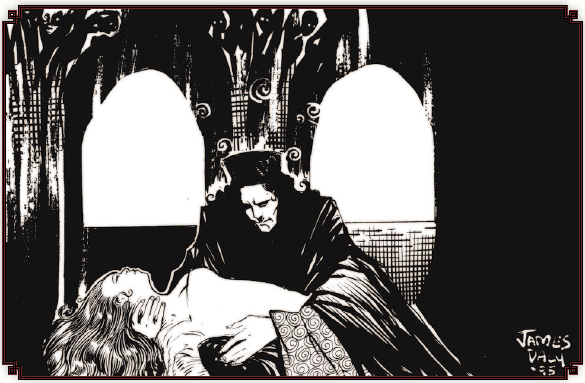
There's some old artwork, like in all the anniversary books, but it's all good and used pretty sparingly.
Penne details the embrace and how it’s a bad thing from her perspective. Penne subscribes to a Catholic worldview and sees the embrace as robbing a mortal of going to heaven and turning them into an embodiment of sin. The capabilities of vampires are then addressed, that they’re faster and stronger than mortals. Physical changes, such as regrowing hair from baldness or losing pockmarks also happens. She equates this to the corruption of Caine’s curse, making vampires more desirable so that they can work and spread more easily across the Earth. She also lets the new vampire know about the sun and that stakes only make vampires immobile and is reversed by removing the stake. The beast is touched on as well, how it’s always with the vampire and how it works. The beast actively wants the vampire to survive and will protect it but if the vampire allows the beast to take hold, the vampire becomes a creature of murder and destruction.
The social structure of the vampires is detailed next. Vampires have their own social structure and spend most of their time infighting. Most vampires bow to the authority of a Prince, although she notes that’s a concept that’s found mainly in Christian Europe, and the older rule the younger. Penne details that the movement of time slips away from vampires and it leaves vampires detached from their old lives and power hungry.
The War of the Princes is brought up and it’s kind of the metaplot for Dark Ages Vampire. At this time in Europe, Princes are vying with other Princes for territory and power, warring with each other openly. Penne opines that when she was embraced this wasn’t going on and that childer are being embraced to be foot soldiers in these petty wars. This is probably true and things are getting worse so it’s not just a “back in my day speech.”
Editorial Note: The War of the Princes is one of the reasons for why the world is going to shit and one of the events that’s speeding up the train to Gehenna, the vampire apocalypse. When we get to character creation, you’ll see that starting generation is lower than in Masquerade and things like the Caitiff, clanless, are rare and not really detailed. As the warfare between Princes builds up and humanity wises up, the body count goes up and the Inquisition gets involved. The Anarch Revolt happens, the younger vampires turn on the elders, and the sects are formed. Due to the younger vampires embracing new vampires and killing off the older generations, generation goes up and up to the point where the blood is diluted by modern times. When you get high enough in generation, there isn’t much difference between a vampire and a revenant, mortals that are in a sense born ghouled. This is one of the signs of Gehenna and the seeds for this are planted in the War of the Princes.
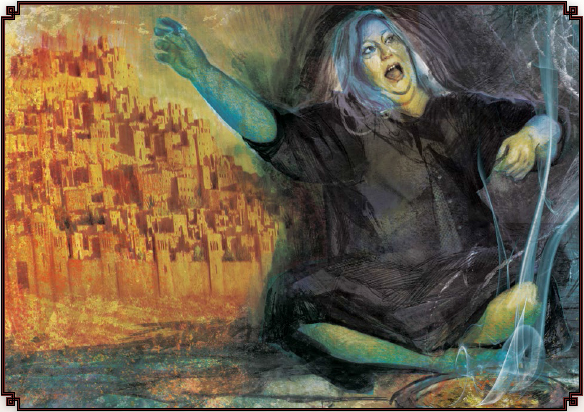
I'm pretty sure this is Penne but she also might be the Nosferatu pictured in the clan write up. The city pictured is probably the First City
The social hierarchy is detailed next and it’s much more nuanced in Dark Ages than Masquerade because there is no Camarilla, Sabbat, or Anarchs to have status in. The first factor is age. Age is important because the older a vampire is, the more powerful and knowledgeable they usually are. Older vampires are usually of a lower generation but that’s not necessary. Generation is incredibly important though and you’ll see in character creation.
Vampire are divided into the following groups:
Fledglings – A newly embraced vampire and pretty much a nonentity to vampire courts. At this point you’re pretty much treated like a child.
Neonates – In the eyes of the Cainite people, you are now an entity. You are now free to live your own unlife but you’re now vulnerable and will probably become a pawn. It’s also possible you’ll get killed for being weak because the dark ages are pretty dog eat dog.
Ancilla – This is a step below an elder and represents a level of maturity not found in the previous groups. At this level you’re usually a middle manager, Penne points out you learn it’s better to delegate for your own survival. You are also valued as an accessible and sane actor because once you survive long enough to be an elder, you usually go crazy or abandon your humanity.
Elder – This is a vampire that’s 300 years or older. You can be considered an elder if you’re powerful enough but it’s rare and Penne suggests you don’t mess with elders.
Methuselah – A vampire who is a thousand years or older. They’re incredibly powerful, somewhat unknowable, and incredibly rare.
Antediluvians – They’re the grandkids of Caine, the founders of the clans, and a complete mystery. No one is really sure if they’re still around or all dead. They might even be possibly pulling the strings from the background.
Editorial note: Some Antediluvians are still around or active, Tremere, Tzimisce, and Cappadocious are still directing things for instance, but some have unknown whereabouts or are presumed dead, Brujah and Set, and one is confirmed dead, Saulot, since Tremere ate him. The Gehenna book for Masquerade details what happened to them but this is the last era where more than the upstarts Tremere or Augustus Giovanni are known to be active. It ultimately doesn't matter too much because Third Generation vampires are pretty much gods and you won't be doing anything with them in a normal game.
Clans are the next division, which is your vampiric family and lineage. Clans are divided into high and low clans. This is a type of class system that makes some vampires below others on the social hierarchy. This is an arbitrary system based on local history and culture. For example Penne points out that if she became Prince tomorrow and filled the city with Nosferatu, they would still be members of a low clan because that’s the way it’s always been in London. She does note that she’s heard of this changing abruptly but she’s never seen it herself.
Penne details Roads next. Roads are your morality path and it’s much more common for a vampire to have a morality path other than Humanity in Dark Ages. Penne notes that vampires often burnout after the first decade but those that survive long enough usually find a way to make peace with themselves. We’ll talk about roads in-depth later because there’s a whole chapter dedicated to them.
Next Up: The Traditions, Cainite Governance, Talkin' Bout Their Generation, and Other Weird Stuff
A Place in Time Part 2
Original SA post
Chapter One: A Place in Time Part 2
The Traditions are the basic laws or rules of vampiric society, kind of like their ten commandments. In Masquerade, a version of these are the basic laws of the Camarilla and the Sabbat.
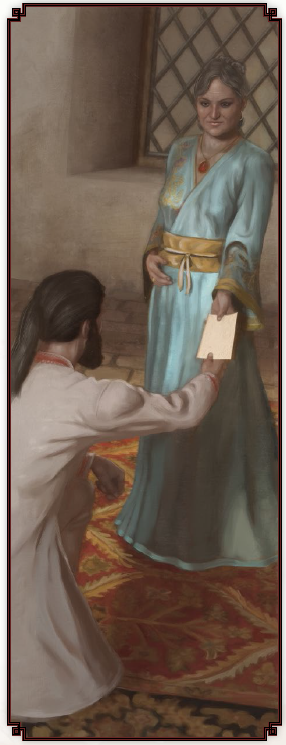
The First Tradition – Covenant
This tradition sets down that all vampires are descended from Caine and authority is derived through closeness to him. The closer you are to Caine, in age and generation, the greater right you have to rule. Princes use this as their quasi-divine right of undead kings.
The Second Tradition – The Domain
This is the tradition that sets down the rules for territory and hospitality. A powerful vampire can declare themselves Prince of an area and control it for as long as they can maintain it. If a vampire can’t keep control of an area, they can lost it. Vampires that come into the area are supposed to present themselves and in turn the Prince is supposed to take them in as long as they promise to abide by the rules and help maintain the domain. A Prince doesn’t have to let people in, it doesn’t say this, but the spirit of Caine’s original directive hints at this. Fiefdoms and herds are usually divided up, usually this division mirrors a mortal political system like feudalism, but some domains are rumored to follow other systems. Again, it’s not set in stone and you can set things up however you want.
The Third Tradition – The Progeny
The embrace is seen as a big thing and isn’t given out lightly. Vampires are usually supposed to ask for permission to embrace from the local Prince, as they are the ranking elder, and not doing so can lead to destruction. There isn’t a set punishment so sometimes the sire is destroyed and the childe spared, or vice versa. It’s mainly up to the Prince and how it fits into their schemes. A childe spared is indebted to the Prince for instance and sire who is spared is indebted as well. Since there’s no Camarilla or other organization, it’s all based on the local Prince.
The Fourth Tradition – The Accounting
This tradition lays down that a sire is accountable for the crimes of their childe. Due to this and the Third Tradition, embrace is not something that should be done carelessly. This can also cover ghouls, mortals given vampiric blood for temporary vampire powers, but it’s unpopular for being a step too far. Again, local laws vary from Prince to Prince and it’s more akin to Requiem than Masquerade in that regard.
The Fifth Tradition – Destruction
There’s some debate on this tradition, mainly as to why it’s bad to destroy other vampires, but the most standard translation of ancient texts holds that it’s bad for the young to kill the old. Therefore the right of destruction is that of the elders and cannot be done without their permission. Again, most the power of the world is in the hands of the elders and they arbitrarily hold power over life and death. Being as this is the Middle Ages, there’s a subtext of divine right in there as well due to generation. You can understand why the Anarch Revolts happen after this coupled with the War of the Princes.
The Sixth Tradition – The Silence of the Blood
This is essentially the Masquerade. Vampires are to remain hidden and kept their existence a secret because mortals will seek retribution against and the Church might send the Inquisition knocking. A vampire is after all a being cursed by God that lives off the blood of the living so it’s not like they’re going to get any sympathy or admiration from the common folk. Elders don’t like this as well for a number of reason, it puts you outside the traditions by entering mortal society for one, and it often leads to the invoking of the Fifth Tradition, though a court usually decides a punishment that meets the severity of the breach.
Domain Organization
Within Christian domains the courts usually follow a system that mirrors the mortal hierarchy of the region. Even within Christian areas, this differs by local tradition and is influenced by mortal trends or history.
Prince
The Prince is the ruler of a domain and is usually the strongest, eldest, and/or combination of the two vampire in the domain. It’s possible for a regent to rule in their place, Mithras the Prince of London does this, and the Prince or their chosen regent is usually not the eldest Cainite but rules with their support. This is generally seen as a good thing because elders are typically strong and having a strong leader prevents upstart younger Cainites from coming in, trying to take over, and engaging in a perpetual war over control of a domain.
An alternative to this setup is given for Athens, which is ruled by a democracy that elects a triumvirate that leads the city. This system is constantly under strain though because the needs of the many are hard to meet but elders feel the need to at least consider their constituent’s needs.
Keeper
The Keeper maintains the Elysia, the neutral places where vampires can meet, mingle, and openly be vampires without fear of retribution. This is a tough job because vampires tend to squabble and fight so the Keeper has to make sure people are entertained while maintaining security.
An alternative is given for Krakow, where the neonates maintain the Elysia. This is seen as being good for strengthening alliances and weeding out the weak.
Editorial comment: The neonates are the most likely candidates to start shit in an Elysia so by keeping them busy with maintaining this institution, they theoretically ensure it’s being run well. It’s kind of like the Japanese elementary school model where the kids clean and maintain the school.
Chamberlain
The Chamberlain is pretty much the Seneschal, the second in command. This position is usually maintained by a trusted advisor, one who is learned and wise, relying on finesse as opposed to brute force. Chamberlains can outlast Princes and in some domains there are multiples.
Paris is given as an example and has such a large population that the Prince needs multiple specialist Chamberlains to maintain their domain.
Sheriff
The Sheriff is pretty much the same as it is in Masquerade. They make sure the laws of the domain are being followed and maintain the peace. They learn the geography of the court and deal with problems, often before they present themselves. The Sheriff’s main focus is on the domain and the Prince will usually have appointed lackeys, usually knights, who they have carry out their petty plans. This isn’t to say that the Prince doesn’t crack heads and occasionally cut them off for the Prince but it’s not their job outside of administering the law and dealing with trouble makers.
An alternative is given for Mongolia, where the Prince will have a Sheriff and the council of elders will have their own. They’re supposed to maintain the peace in the domain and maintain a balance of power between the elders and the Prince.
Misc. Positions
Sometimes domains have their own specialized positions and since there’s no greater organization this happens often.
London’s Own Rat Catcher – This is essentially London’s Charlie Kelly. Their job is to herd and maintain the rats of the city, making sure they’re healthy and edible. They’re corralled into cisterns for the unfortunate vampires in London to eat.
Quanzhou’s Murder of Harpies – This is a group of vampires who keep tabs on the court gossip and rumors of Quanzhou.
Free Lances and Scourges – These are the violent enforcers of the Prince. They usually operate in secret and act as the Prince’s murderer or murder squad. More often than not people don’t know who the Scourge is, it’s all putting the pieces together, and this is another aspect of a Prince’s harsh, arbitrary rules. Scourge is a position in Masquerade for those not familiar with it and it operates on the same principle but they’re usually a known quantity from what I remember.
Elders often meet and conduct business formally or informally. Sometimes elder councils exist, like in the Mongolia example, but it’s not common. Some Princes restrict these types of bodies from forming too. An example is given of a domain in the Holy Land where vampires over 100 years of undeath can meet with another of that age or older. If they do, they are destroyed because the Regent-Prince is that powerful.
Generation
Generation is the lineage of vampires and represents their closeness to Caine. Caine was the first vampire as discussed, cursed by God for the first murder. He murdered his brother Abel out of jealousy and for that he was cursed to wander the Earth for eternity. The lower a vampire’s generation, the fewer steps they are from Caine, the more power they inherently have. Vampires can artificially lower their generation by committing the Amaranth, diablerie. The Amaranth is the greatest crime a Cainite can commit and involves a vampire devouring the soul of another vampire. If the vampire is lower generation, the vampire lowers their generation and can gain new disciplines they would not have access to. It also strengthens the beast and marks a vampire as a soul devouring murderer when looked at through Auspex, a discipline based around aura reading.
The Second Generation – Caine’s children and not much is known about them or their powers. It’s believed they were godlike in power. None of them are known to have survived past the great Deluge.
The Third Generation – These are the mysterious founders of the clans, the Antediluvians, and Caine’s grandchildren. At this level, the blood is so potent that they are virtually gods and can create their own lineages. Most of the Antediluvians are out of the picture, gone or in torpor, but some are still around as discussed. The newest Antediluvian is Tremere, of Ars Magica fame and he’s not well liked for upsetting the apple cart.
The Fourth and Fifth Generations - These vampires, called Methuselahs, are powerful and typically very old. At this level they can still create their own lineages, bloodlines, but they are only variations on a clan. They are still up and about. Penne believes they are the cause for the War of the Princes and she’s definitely not wrong believing that.
The Sixth and Seventh Generation – The Elders and the most notably active of the older power players. They’re pretty powerful but inherently weaker than the lower generations. By the time of Masquerade they’re much rarer than during this time. A seventh Generation vampire is the oldest vampire you can make at character creation in V20 Dark Ages.
The Eighth, Ninth, and Tenth Generations – The Ancilla, typically the middle managers within domains. These characters are typically the oldest characters you can make in a Masquerade game at character creation.
The Eleventh and Twelfth Generations – The Neonates and the most common vampires. These are the weakest vampires and are generally held to human levels in abilities and attributes.
The possibility of thin bloods, lower than 12th generation, is presented as possible. It’s difficult to pull off physically and politically but it can happen. In Masquerade the starting generation is 13th generation and that’s a bad thing.
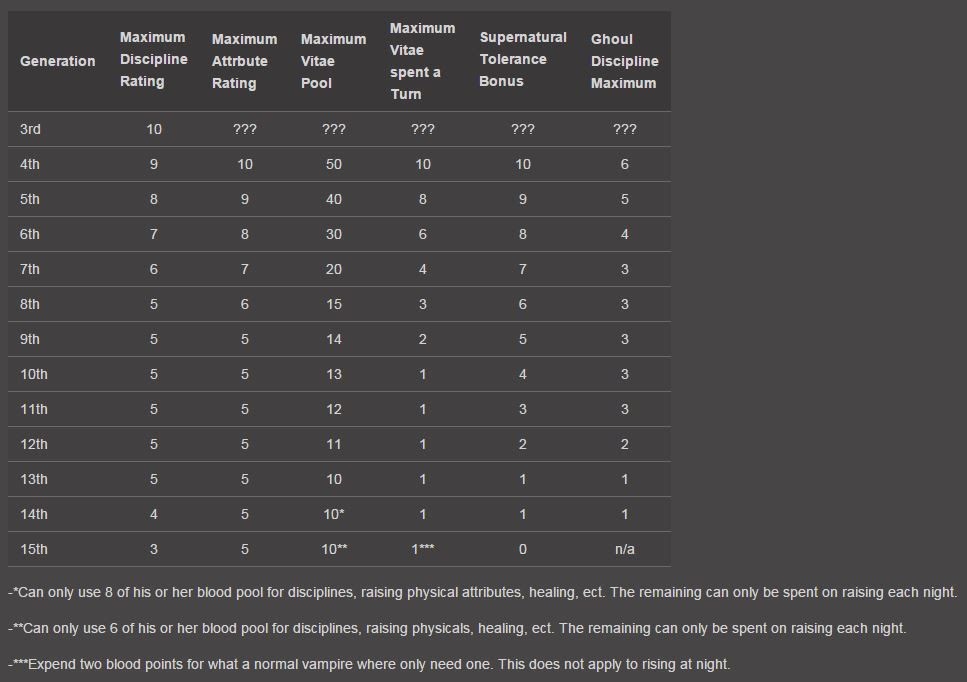
This is a chart for Masquerade but the breakdown is the same. As you can see, the lower generations are inherently more powerful and can do more than higher generation vampires. Having more blood points, it’s a qualitative rating, and being able to spend more lets them use more powers, which can be incredibly powerful when it comes to disciplines.
Wassail
When a vampire loses themselves to their beast, they are consumed by it and it takes over. The vampire pretty much becomes an animal that does nothing but kill and feed.
Golconda
This is vampire enlightenment or salvation. Golconda is a mythical state wherein a vampire makes peace with their beast and is no longer burden by many aspects of the vampiric condition. You essentially get all the boons of being a vampire without any of the curse. This is all hypothetical and Penne posits that the Antediluvians may know the secret and keep it from younger vampires. Vampires who go seeking it out generally end up destroyed.
Antagonists and Other Oddities
Hunters – Hunters and the Inquisition are something vampires have to watch out for. Penne blames the Cathars for bringing down this issue on them.
Werewolves – Penne has never met one but has been assured they exist. A Gangrel has told her they walk among men in plain sight, seeking out mates and hunting the unclean. They are impossible to differentiate from humans and can turn into towering monsters at will.
Witches – Penne remembers, much like Pepperidge Farms, a time when those who practiced magic did so freely but now they live in fear of the Inquisition like vampires. This doesn’t make them allies though and Penne points out the consequences of making that mistake.
Shining Ones – The fae, which she really doesn’t talk about. They mostly live on the edge of human society, in the wild areas.
Ghosts – Penne points out that they’re real and they tend to crop up for vampires due to the occasional murder or accidental death. They’re not pleasant and tend to hound those that killed them.
Deeper Mysteries Still – Secrets, adventure, danger, and the unexplained are always out there. Essentially the type of stuff Arthur C. Clarke or Leonard Nemoy would host a show about that doesn’t have a splat book.
https://www.youtube.com/watch?v=r_SAKcOuTpU
Chapter Two and Chapter Five: The Clans of Caine and the Gifts of the Blood
Original SA post
Chapter Two and Chapter Five: The Clans of Caine and the Gifts of the Blood
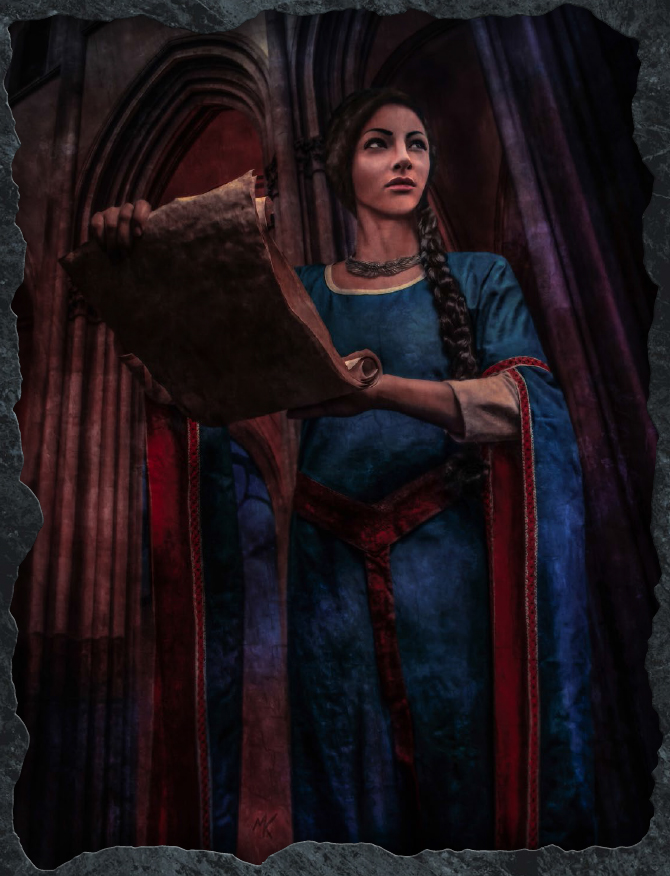
Seriously? I’m getting tired of your shit Athelbald
Clans, Bloodlines, and Class
This section of the review won’t be as straightforward as the previous entries for a number of reasons. One of the reasons is that the book presents information in a standard White Wolf fashion, compartmentalized and kind of counter-intuitive, and assumes you know the setting. This is a 20th anniversary edition of a setting so it’s honestly somewhat expected, this isn’t made primarily for new players. Either way, the combining of the sections on clans, bloodlines, and disciplines will give a better picture of the clans since disciplines are pretty integral to their identities.
So what is a clan? A clan is a large family of vampires that are generally descended from an Antediluvian and have been around for a long time. There are some exceptions to this, the Tremere, who come on to the scene right before the Dark Ages setting, and the Giovanni, who step up around the time period of the founding of the Camarilla. They are usually pretty common relative to bloodlines and usually follow standard vampire archetypes.
Well what the fuck is a bloodline then? A bloodline is a minor, distinct family of vampires that is usually descended from a clan. It’s possible for a clan to become a bloodline. The Salubri for instance were demoted after Tremere diablerized Saulot and essentially usurped their status as a clan. The Giovanni started out as a bloodline of the Capadocians and are one during this time. How are bloodlines formed?
 It’s very vague in Masquerade but generally most bloodline founders are 4th to 5th generation if they’re known at all. Someone can probably prove me wrong but bloodlines tend to be outside the purview of players.
It’s very vague in Masquerade but generally most bloodline founders are 4th to 5th generation if they’re known at all. Someone can probably prove me wrong but bloodlines tend to be outside the purview of players.As stated before, a clan is like one’s family. It’s a vampire’s lineage before getting down to the knitty gritty of who sired who. Just like family names in Medieval European society, one’s clan carries some societal weight. Clans are generally divided into high and low clans. Who is high and who is low differs from location to location and local traditions as mentioned before. In the standard Western European setting though, revised grouped them as such.
The High Clans: Brujah, Cappadocian, Lasombra, Toreador, Tzimisce, Ventrue
The Low Clans: Assamites, Followers of Set, Gangrel, Malkavian, Nosferatu, Ravnos, Tremere
Generally the high clans are the ones that easily pass for human and are more socially acceptable. The Assamites, Setites, and Ravnos are outsiders from Asia so they’re low. The Malkavians are mentally ill and the Nosferatu are all ugly. The Gangrel take on bestial traits over time, don’t like to play social games, and don’t tend to care so they’re low. The Tremere are low because they’re hermetic wizards who are viewed as usurpers or worse by everyone.
This can all change by geographic location. An example is given of Cairo and how the Setites are the highest clan there due to it being their ancestral base of operations. I would imagine the Assamites would have a similar status in Persia, where they are based.
Low clans have to defer to high clans and follow the pecking order. When a vampire enters a new domain The have to figure out the pecking order or they might run into some trouble. Bloodlines are always considered to have a status similar to low clans or lower. There are some exceptions, the Salubri are often still given respect but that is changing as the star of Tremere rises. The Tremere have been running a successful campaign against the Salubri, painting them as diabolists and by the time of Masquerade they are generally regarded as such.
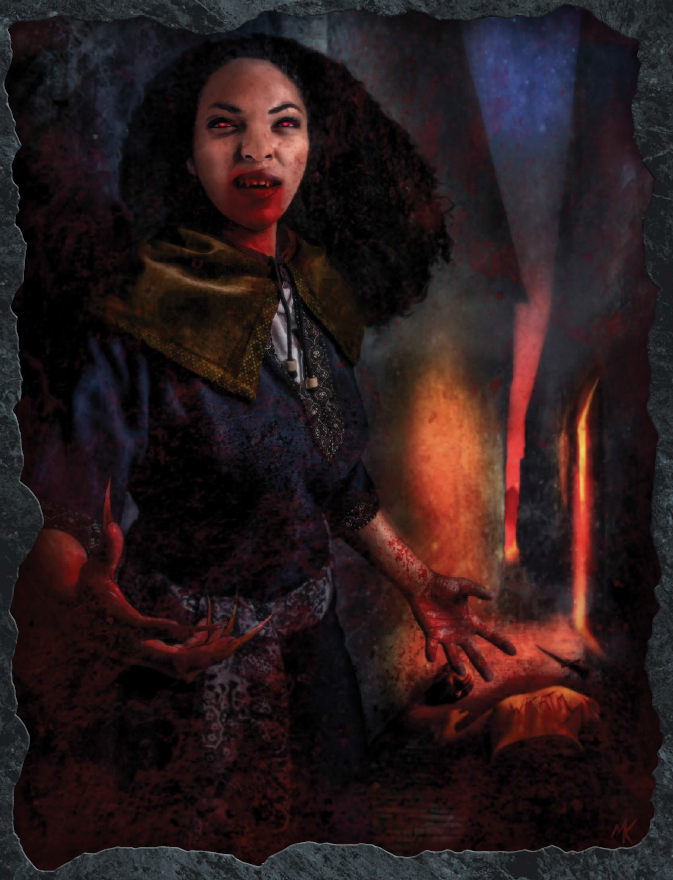
Not a time to lose one’s head, right guys? Right?
Disciplines
Vampires have powers unique to them called disciplines. Some of these powers are unique to clans and some are general powers that any vampire can easily learn. Celerity, Fortitude, and Potence can be learned without a teacher and are basically harnessing the vampiric condition. Vampires can also learn their clan disciplines without a teacher. Learning a rare or clan/bloodline specific discipline requires a vampire to drink the blood of one of those vampires and for them to teach them how to use the discipline. This isn’t done lightly due to blood bonds but is also one of the reasons that Sabbat vampires in Masquerade tend to be broken, blood bonds don’t really matter to them as much.
High-Level Disciplines
Vampires of 7th generation and lower can learn the advanced powers of disciplines. Standard disciplines generally have up to 9 levels and a 7th generation vampire can access the 6th level or dot, a 6th generation vampire can access a 7th dot, and so on. These powers are generally pretty powerful and aren’t often open to PC’s. The 10th dot is only accessible by the Antediluvian since they created the disciplines.
Combination Discplines
Combination disciplines, they’re called devotions in Requiem, are using two disciplines in tandem as part of a formula. Vampires can learn these specific combinations through the expenditure of experience points.
Blood Sorcery
These are specialized forms of blood magic that are specific to vampire clans or bloodlines but can be learned by nonmembers. They come in different styles and flavors but the most common are Thaumaturgy and Necromancy. Abyss Mysticism and Koldunic Sorcery are also detailed in this book but there are more varieties available in Tome of Secrets as well as more stuff for the ones covered here.
Blood sorcery tends to be expensive because each type is generally composed of paths that you have to buy dots in like any other discipline. When dots are purchased for a blood sorcery, the vampire gains a dot in their main path and a ritual of equal or lesser level. Sorcerers can learn other paths but they can’t buy a dot above their discipline rating. There are no limitations to how many rituals a vampire can learn, only in the levels they can buy like path dots.
Blood sorcery tends to be quite powerful but is theoretically limited by a vampire’s generation in Masquerade, where it’s higher and they can’t do as much. Vampires in Dark Ages generally don’t have as much of a problem because they’re lower generation and can spend more blood per round.
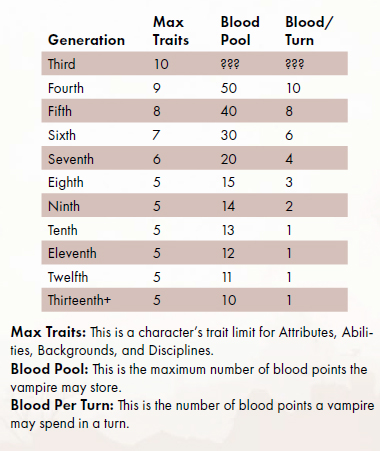
Some disciplines use willpower but holding more blood and being able to spend more blood a round makes a character insanely powerful at times.
Mechanics
This is a standard White Wolf/Onyx Path joint so all your rolling for actions and disciplines is going to be Attribute + Ability + Bonus. You’ll have a target difficulty based on the specific action but it’s generally around a 6 or 7. It can be higher or lower, it’s all based on what the book says or how the storyteller feels. A 3 is trivial and a 9 is extremely difficult. There are no 10 rated difficulties. There are degrees of success and how many successes you roll impacts the action you’re taking. If you have a specialty, four or more dots in an attribute or ability you get an area of specialization, 10’s rolled count as two successes. I’ll address other mechanics when disciplines mess with them but I think that's it for now.
Next time on V20's Dark Ages, some clans.
Chapter Two and Chapter Five: The Clans of Caine and the Gifts of the Blood
Original SA post
Chapter Two and Chapter Five: The Clans of Caine and the Gifts of the Blood
The first clan review will cover one clan but you will found out this is really the equivalent of three clans by the way they're set up.
The Assamites
Sobriquet: Children of Haqim, Saracens
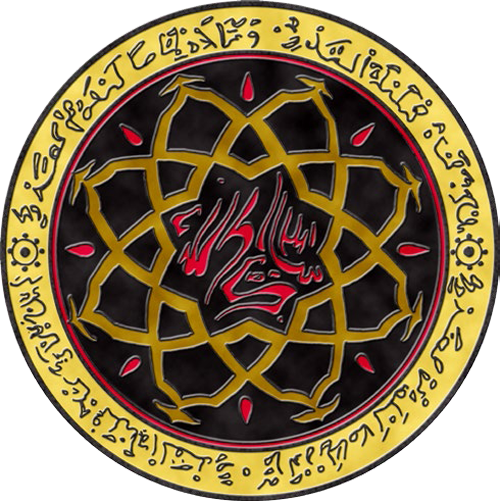
Editorial Side note: One thing I want to note as well is that the Assamite Alamut is in Anatolia and the real life Alamut is in Iran, which I got wrong before. There is an Alamut in Turkey, it’s by the southeastern coast of Anatolia, but it’s not really noteworthy. The Iranian Alamut is home to the mountain fortress of the Hashshashin. The Hashshashin are active during this time period too btw.
The Assamites are a bit of an oddity because they’re a major clan with specialized branches. For that reason, they get their own review because there are three flavors of Assamite. This is mostly done because the Assamite are originally meant to be an NPC and possible antagonist clan. Although they’re not overtly evil or belligerent, they are not well liked by most vampires for obvious reasons.
The Assamites during this time period are just coming onto the European scene and had mostly been confined to the Middle East, which at that time is just the East or the Levant to most Cainites. The average kindred younger than an Elder probably doesn’t know who they are but Elders and older vampires are familiar with them. Although they come from the Middle East and are stereotyped as Muslims, hence the Saracen nickname, they are drawn from every background and dislike the nickname Saracen. Older Assamites don’t care because misinformation is great in their eyes. They usually refer to themselves as the Children of Haqim, their Antediluvian. The Assamites exist under the belief that Assamites are charged with keeping other Cainites in line and are charged with dealing with Cainites that step out of line and interfere in the mortal world too much. For this reason, the Assamites believe that they are charged with reclaiming the blood of vampires that abuse their gifts and meddle too much in mortal affairs. This translates to a clan wide allowance of diablerie in certain cases. This makes them very popular among vampires who know who they are.
The clan itself consists of three branches, which are pretty much their own bloodlines. Sorcerers handle the communications and arcane matters of the clan, warriors are the soldiers, enforcers, and assassins of the clan, and the viziers are the PR wing of the clan that gathers information, interfaces with vampires on behalf of the clan, and handle the billing and accounting. Most services are rendered in denominations of blood but they don’t mention this in the write up. Most Assamites encountered will be viziers and have sorcerers supporting them. For this reason, the main entry is for viziers. It’s also pretty dangerous for Assamite warriors in public due to their weakness.
Appearance: All Assamites, regardless of their origins, has to spend time at Alamut and usually adopt Middle Eastern attire at that time. Outside of Alamut, it’s usually based on functionality but the Sorcerers dress in a traditional, Middle Eastern, fashion.
Haven: Assamites tend to choose out of the way, easily defended locations. They also tend to value security over comfort or material wealth but some viziers break this trend to show off.
General Assamite Weakness: All Assamites suffer from a darkening of the skin throughout their unlives. It’s not a darkening in a natural sense or fashion but to a point where they’re matte onyx by the time they’re elders.
Vizier Weakness: Viziers are essentially obsessed with their highest creative or intellectual ability to the point where it’s a derangement. This allows vampires using Auspex to easier read their auras to learn their Nature and the object of her obsession.
Sorcerer Weakness: Sorcerers have a problem hiding their arcane nature and are easy to detect when using Thaumaturgy.
Warrior Weakness: Warriors always show up as diablerists under Auspex, even if they’ve never commited the act. This is why they’re not the face of the clan.
Vizier Clan Disciplines: Auspex, Presence, Quietus (Hematus)
Sorcerer Clan Disciplines: Assamite Sorcery (Thaumaturgy), Auspex, Celerity
Warrior Clan Disciplines: Celerity, Obfuscate, Quietus (Cruscitus)
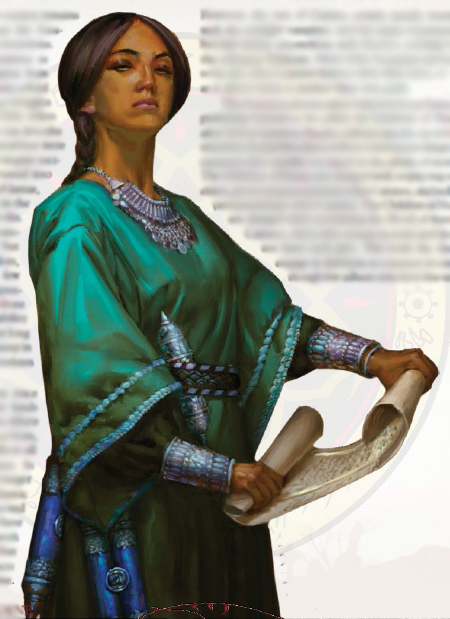
I’m going to cover the first five of each discipline in this write up and I’ll do some posts that focus on advanced disciplines in a later post.
Auspex
Auspex is a discipline associated with sensation and revelation. It is powered by willpower. Auspex can see through Obfuscate, vampire stealth, and Chimestry, vampire illusions. Sometimes this will work on other supernaturals but it’s not guaranteed. Any character with at least one level in Auspex can occasionally sense that there is a plot against them. It’s essentially spider sense but doesn’t always go off. These flashes can also happen when using the discipline. It is also common to experience overstimulation when using Auspex sense it allows a vampire to read minds or increase their sight or hearing. To use another comic book simile, it’s like Superman or Jean Grey when they first develop their powers.
Level One – Heightened Senses: The vampire can increase their senses, or just one if they wish, reflexively and difficulties related to using the sense are reduced based on the number of dots they have. It’s possible to get overstimulated, blinded or deafened. It’s rare to get intuition flashes from this.
Level Two – Read the Soul: You can read people’s auras and determine their emotional state, if they are a supernatural creature, and if they committed diablerie. The amount of information you glean is based on successes.
Level Three – The Spirit’s Touch: The vampire can sense the psychic residue on an item left by someone handling it or using it for some purpose. The longer it’s used and the stronger the emotions when it was used lower the difficulty. The amount of information gained is based on successes.
Level Four – Invade the Mind: The user can read the mind of a target and take away one detail per success. This can be tricky since minds are constantly moving so Storytellers are reminded to keep this mind.
Level Five – Soul’s Flight: The vampire astrally projects from their body and can travel quickly to any location they know of. The difficulty is based on familiarity and if they’ve actually been there. This leaves their body in torpor. If this is botched, the vampire’s soul goes flying to an unknown, possibly supernatural, location. The user cannot interact with their location and cannot be affected by it physically, though can still suffer frenzy from seeing the sun or fire. The vampire can appear as an apparition and speak to people for a willpower point.
Celerity
Celerity is a discipline that passively modifies a vampire’s dexterity dice pools and they can spend a blood point to get a number of actions equal to their level of celerity. Celerity also adds to the vampire’s initiative rating and to the number of yards they can move a turn. The actions gained from activating celerity do not invoke a penalty, like extra actions gained through blood expenditures, and a number of them equal to half the vampire’s celerity levels can be combat actions. A vampire for one blood point can also multiply their move speed by their celerity level for one turn. As you can imagine, at level 5 this discipline is crazy powerful.
Obfuscate
This is the stealth discipline. It’s only really trumped by Auspex when it comes to vampires but most mortals can’t counter it. Sometimes animals, children, and religious visionaries aren’t affected.
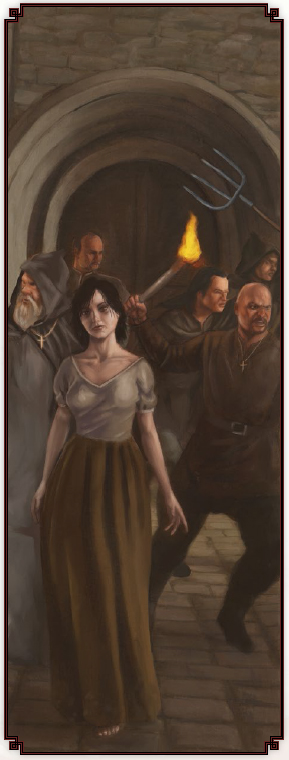
Level One – Silence of Death: The vampire can reflexively create a zone of silence around themselves that can extend to 7 meters. No sounds can be created in the zone but sounds from outside can be heard. A vampire can leave behind the zone for as long as they wish for two blood points and concentrating for 5 rounds.
Level Two – Unseen Presence: The vampire can reflexively move around unnoticed as long as they don’t interact with the world around them. Those who encounter the vampire will reflexively move out of the way of the vampire. A Cainite can extend this to a small object after a test.
Level Three – Mask of a Thousand Faces: The user of this discipline can make onlookers see them as someone else based on the number of successes the Cainite has made on the test. The vampire’s body doesn’t physically change as well, just people’s perception of them. At one success the vampire is stuck with their physical mass to work with but at 5 successes they can change everything. Improvements to appearance costs blood points, such as one per Appearance dot gained, and it is incredibly difficult to fool someone familiar with the person the vampire is appearing to be.
Level Four – Vanish from the Mind’s Eye: The Cainite who uses this power can fully influence what others see and can completely disappear from the sight. If the vampire rolls three or lesser successes, the vampire appears ghost like. With more than three, the vampire completely disappears. If the vampire scores more than the victim, the victim forgets the vampire was there and does not reflect on the memory of their interaction or conflict. If the vampire is seen at the lower result, they are harder to interact with and penalties are taken after a failed roll to interact with them. Seeing a vampire disappear can mechanically cause an onlooker to freak out if they fail their roll.
Level Five – Cloak the Gathering: The vampire can extend their Obfuscate powers to a number of others equal to their number of stealth dots. Larger objects, a horse or a house for examples, can be extended to for an expenditure of a stealth trait. All normal restrictions apply to those extended obfuscate.
Presence
Presence is a discipline of subtle, emotional manipulation that a vampire can use on individuals and crowds. This discipline is powered by blood. Unlike Dominate, which is direct command and control as a vampire exerts their will over another, Presence only controls emotions and requires some maneuvering to get what you want.
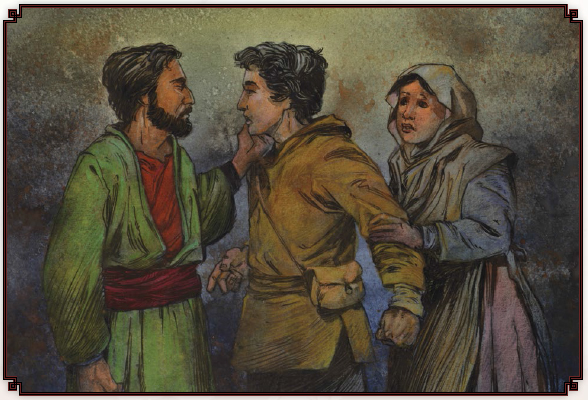
Level One – Awe: This power grabs the attention of onlookers and directs it to the Cainite and influences the perception of onlookers when they look at the user. The vampire can make them feel the vampire is honest or dangerous for example, something that can be summed up in one or two words. This powers range of effect is determined by success and can be resisted with willpower.
Level Two – Dread Gaze: This power allows the vampire to reflexively induce fear in targets by revealing their predatory nature in a dramatic way, such as barring their fangs. Those that fall the opposed roll to this test flee in terror and successes against them are subtracted from their future dice pools. The target attempts to flee as best they can but if their dice pool is reduced to zero, they break down and can’t perform any actions.
Level Three – Entrancement: This power entrances the target, this should be obvious, for a period of time equal to the number of successes they achieve. The target will be compelled to serve the vampire but once the power’s duration ends, the target will most likely realize what was done to that and not be happy about the situation. This power can last for up to a year, 5 successes, so it does have some weight to it. The test’s difficulty is based on the target’s willpower and the sway can be broken temporarily through spending a willpower.
Level Four – Summon: The vampire can summon a target they’ve encountered before to them. The target doesn’t know who is calling but will come at a rate determined by the amount of successes made and the difficulty is based on familiarity, topping out at a 7. The power lasts until dawn so it’s not something you could conceivably use on someone far away in the Middle Ages.
Level Five – Majesty: This power allows the vampire to spend a willpower and boost their appearance to such a degree that no one will act against them, socially or physically. If an individual wishes to, they may roll their courage against the vampire’s combined Charisma and Intimidation. If they fail, they go to absurd lengths to make up for it.
Quietus
Quietus is the signature discipline of the Assamites and at this time it’s divided into two disciplines. Quietus Cruscitus is the Latin name for the Warrior version of Quietus and Quietus Hematus is the name for Vizier version. Sorcerers don’t get a version but there’s a Thaumaturgy path in Tome of Secrets. The Assamites don’t refer to it as Quietus or the branch terms but use Phonecian terms. It talks about the meaning and etymology of these terms, which is cool, but I’m not going to go into it.
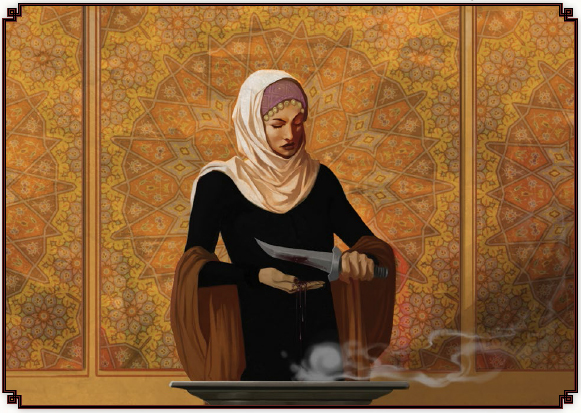
Quietus (Cruscitus)
“The settling of debts by the science of murder through blood” is the meaning they give for the name.
Level One – Blood Essence: This power allows the Assamite to drain a victim down to one blood point and then rip out their heart for later. It’s a difficult test, a 9 difficulty willpower test, and the victim can fight back if able to. The heart is in a grayish, preserved state but if the vampire bites into it, they can treat it as draining the mortal dry or diablerizing the target if they were a vampire.
Level Two – Scorpion’s Touch: The vampire can convert an amount of blood equal to their generational spending limit to a poison that damages the target’s stamina. If the target is reduced to 0 stamina, mortals die and vampires go into torpor. The poison must be ingested but the vampire can use it as a trap by letting a vampire bite them, can release it by biting or filling their mouth with it, or by coating their weapons with it. It pretty much has to be delivered to the Cainite or mortal’s bloodstream to work. Vampires and ghouls can reflexively purge the poison by succeeding at a test and spending a blood point. Mortals cannot recover from this poison.
Level Three – Dagon’s Call: The vampire delivers a dab of blood to a target, again entering the target’s bloodstream, and after an hour can attack the target vampire from within. The difficulty to activate this power is proportional to the distance from the target and can range up to difficulty 10, which is ridiculously high in a d10, no exploding dice system. After a contested willpower challenge, unsoakable lethal is delivered to the target based on the number of successes. A botch delivers the opposite.
Level Four – Baal’s Caress: This power works the same as Scorpion’s Touch but delivers regular aggravated damage. Coated weapons deal aggravated damage as well so it has a greater utility in combat.
Level Five – Quicken the Mortal’s Blood: The vampire gains double nourishment when feeding from mortals and this translates to each blood point taken being equal to two.
Quietus (Hematus)
“The settling of debts by an offering of blood” is the meaning they give for this name.
Level One – Blood Tempering: The vampire instills their blood into an item, giving it can amount of soak dice based on the character’s stamina. The number of successes determines the length it lasts, 6+ is indefinitely, but the item takes on the Cainite weaknesses to fire and sunlight.
Level Two – Truth of Blood: By filling a container with a target’s blood, the user can determine if the target is lying or not. The number of successes gained on a test against the target’s willpower score determines the level by which the user can determine the truthfulness of their statements.
Level Three – Cleansed in Blood: The user anoints a target in blood and after an hour of concentration with them can cleanse them of any Cainite mind influencing powers. The user has to spend blood equal to the level used and this affects Dominate, Dementation, and Presence uses. This doesn’t protect against future uses by the Assamite mind meld is still pretty useful.
Level Four – Ripples of the Heart: The user imbues the blood of another with an emotion after drinking one point from the target. The targets blood will now be imbued with that emotion, such as fear or hatred, and drinkers of it will be afflicted by a version of that emotion. The severity is based on the number of points they drink. It can be used to lock down the drinker in fear, a blind rage, or to bolster allies by giving them preternatural courage.
Level Five – Blood Sweat: The user, after coming into contact with the target’s blood, can cause them to lose an amount of blood equal to the number of successes the user rolled on a willpower test. This requires three turns of concentration and the target must be in line of sight of the user. The target is also wracked by feelings of guilt or a spiteful compulsion to boast, it’s all based on their Road and morality system.
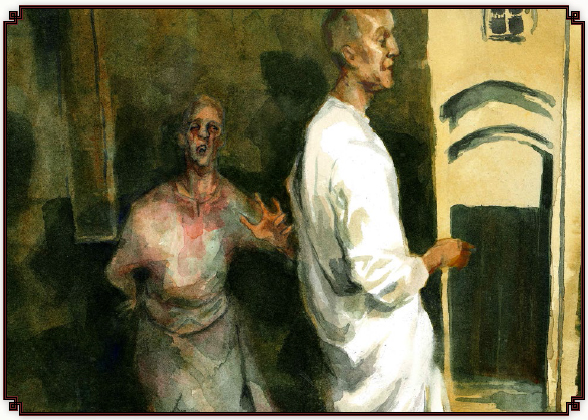
Assamite Sorcery (Thaumaturgy)
No specific Assamite paths are given in the core book, they can learn most the paths in the Thaumaturgy section and there is one in Tome of Secrets, but two Assamite specific rituals are presented.
Level Four - Return of the Heart: This ritual returns a portion of a vampire’s soul to them and treats them as though they are following the Road of Humanity at a level of 9. This will cause the vampire to suffer guilt and degeneration for the most minor of transgressions. It requires the targets blood, 5 minutes, and lasts for one hour per success.
Level Five - Rite of Marduk Slain and Risen: A vizier names a target for a sorcerer and they, along with three other participants who know the ritual, probably sorcerers, work a ritual directed at the target. The casters act out the myth of Marduk, donning robes and masks to portray the parts within it. If successful, if the target is diablerized before the next sunrise, the victim’s sire, all of the sire’s other childer, the victim’s childer, and any vampire they have a Blood Oath (blood bond) to lose one blood point and three willpower points as they feel what the target is feeling. These go to the diablerist, and if the diablerist is full, it goes to the vizier, and then the sorcerer in the same fashion. All of these vampires negatively impacted by the ritual also lose one willpower for every ten minutes they’re in the presence of the diablerist, vizier, or sorcerer and this lasts for 13 nights.
Chapter Two and Chapter Five: The Clans of Caine and the Gifts of the Blood
Original SA post
Chapter Two and Chapter Five: The Clans of Caine and the Gifts of the Blood
In this segment we are going to look at the Brujah, Gangrel, and Lasombra. I would do four but the next one is the Cappadocians and they get their own review because of Necromancy.

Brujah
Nicknames: Zealots, Philosopher-Kings, Rabble (Derogatory)
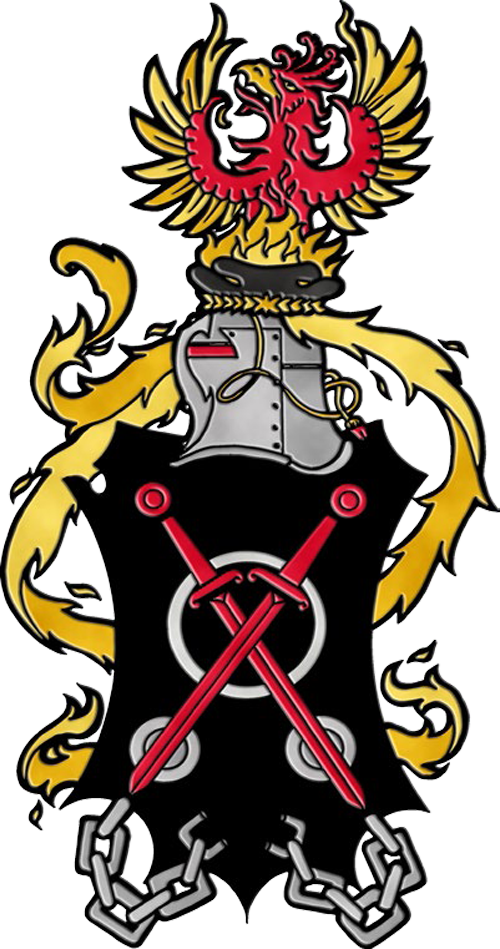
The Brujah to me have always been the standard, generic vampire. You could argue the Ventrue are kind of that but the Brujah always struck me as your standard Blade, Anne Rice vampire. In the metaplot they’re kind of generic vampires too because they are the base of the Anarchs and the Sabbat. They’re also one of the many groups involved in the Russian Revolution and the Soviet Union, which actually goes back to their backstory.
Brujah, the clan founder, was a hot head that often came into conflict with his contemporaries due to his passions and drive to understand the Cainite condition from every angle. In order to temper this he sired Troile after Noah’s flood.
Editorial Note: Troile’s gender is ambiguous and not because of any descriptors or Troile being androgynous. I’ve seen Troile described using feminine pronouns and this book uses masculine pronouns. It doesn’t really matter too much because they are long gone by this point in time and they're possibly buried with the ruins of Carthage, which we’ll get to that.
Troile was embraced because he was cold and calculating while Brujah was ruled by his passions. Brujah believed this would check him from overstepping and going out of control. The opposite actually happened and Brujah attacked Troile and in self-defense Troile accidentally diablerized Brujah. The other Antediluvians were understandably pissed and Troile defended his actions, claiming it was necessary to use murder in order to preserve the peace that existed between Cainites and mortals. The Antediluvians were convinced and Troile lived. Caine returned and didn’t agree with Troile and cursed Troile. Troile and all Brujah descended from him would be cursed by three times the passions of Brujah. Troile would wander and eventually come to Carthage, where he would attempt to recreate the First and Second Cities. This worked until the Venture and Malkavians of Rome destroyed Carthage. Troile is believed to have perished in Carthage.
Editorial Note: It’s heavily implied that Troile is buried under Carthage and may or may not have been recovered in modern times. The fall of Cathage is also more than just the Ventrues being dicks too, the Baali are involved and Troile had possibly turned to infernalism. Either way, the finer details don’t matter because it’s about the broad strokes.
I kind of think this is a bad write up because it’s all about Troile and their downfall. While this does give some ideas of how Brujah are and why they always keep trying to build vampire utopias, it doesn’t really tell you much about them as individuals and their role within Cainite. I guess they are generic vampires after all and generally fill the role of generic fighting person half the time due to their discipline set. They’re called Philosopher-Kings but they don’t really tell you why. They’re also called Zealots but you’re not really sure as to why.
Appearance: Brujah generally dress like people of their station in real life dress. They embrace everyone from clergy and knights to peasants. It’s all based on the time, place, and needs of the sire. They tend to stick to knights and clergy though because they want people who have an education and high intelligence, though the two aren’t mutually exclusive at all.
Havens and Prey: Brujah seek out large groups of people and tend to dwell by them. When they’re embraced, they usually dwell with their sire but I imagine that’s common. Recently likeminded Brujah have been forming communal havens where they philosophize and training together. They refer to them as “packs” and that’s a little something we call foreshadowing because the Anarchs and Sabbat operate in “gangs” and “packs”. Many of the institutions in Masquerade can be seen forming in the Dark Ages and that’s kind of cool.
Clan Disciplines: Celerity, Potence, Presence
Weakness: Brujah suffer from the terrible curse put on Troile and frenzy rolls are two points more difficult than normal. They can also never spend Willpower to avoid frenzy but can spend a Willpower to end a frenzy.
Organization: Brujah are often at odds with each other but if they can ever agree on something and dedicate themselves to a cause as a group, they’re pretty powerful. Usually a sire and childe will have a teacher, student relationship but the childe will eventually get their own big ideas and run off. Brujah will often organize in small groups too, like in the haven section, and are usually bound by a common philosophy.
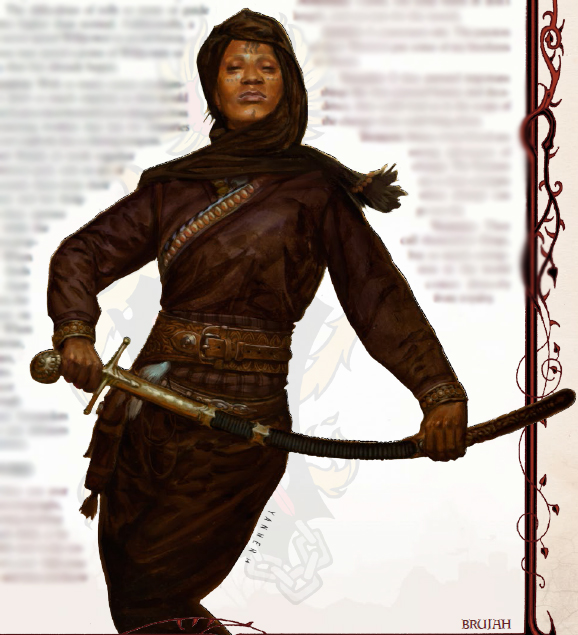
Gangrel
Nicknames: Outlaws, Wolf’s-Heads
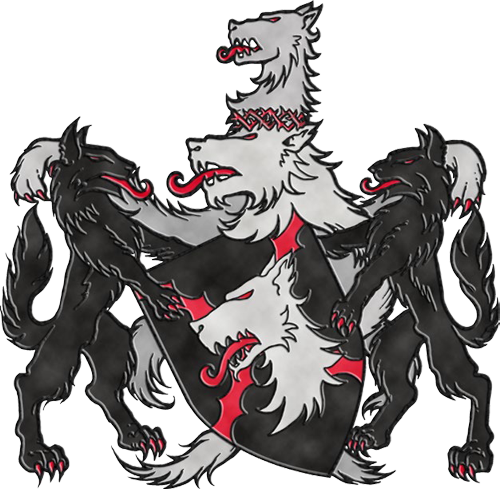
The Gangrel are pretty much clan Wolverine and are generally the other combat clan in the game. They have a nice discipline set for it so it’s not a bad fit either.
The Gangrel are essentially forest dwelling loners. They in many ways generally loath humans and humanity and prefer to live in solitary and rely on loyal animals, whom most can communicate with through Animalism. Although they prefer to be loners, they do interact with humanity and other vampires when they chose to, not because they have to in order to survive. They do this because they like to walk their own path and NO DAD, I DON’T NEED YOU OR MOM TO HELP, I’M MY OWN MAN.
Appearance: The Gangrel are pretty mutable and practical in their dress. They dress however suits their needs and don’t really care what others or society thinks. Some Gangrel may be particular about the image they present to their herd because they want to make it known that they are their herd and theirs alone.
Haven and Prey: Gangrel pretty much live where they want to, they’re outlaws. They live wherever they can and it’s not noted here but Gangrel with enough levels in Protean can sleep wherever they like. Some Gangrel tend to their herds like farm animals, watching over them and practicing husbandry, while others operate like spiders, luring in their prey.
The Embrace: The Gangrel tend to brutally embrace people, grabbing them, embracing them, and then abandoning them soon after. They usually watch their childe from afar but it sounds super traumatic, more so than the usual embrace.
Clan Disciplines: Animalism, Fortitude, Protean
Weakness: When Gangrel frenzy, they take on physical or mental traits that resemble those of local vampire myth or regional predators or scavengers. Overgrown eyebrows and patches of fur are examples given. The traits gained raise the difficulty by 1 on a relevant pool and give one automatic failure on that test.
Organization: There is no set organizational structure for Gangrel and it differs from place to place. Sometimes they organize themselves, sometimes they don’t. Most hierarchy tends to come from respect earned through deeds or displays of power.
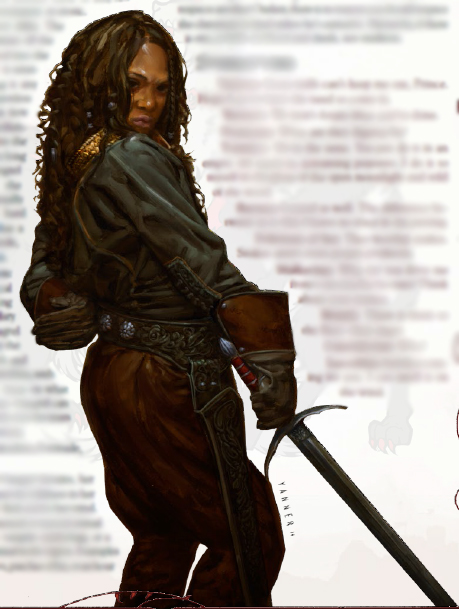
Lasombra
Nickname: Magisters
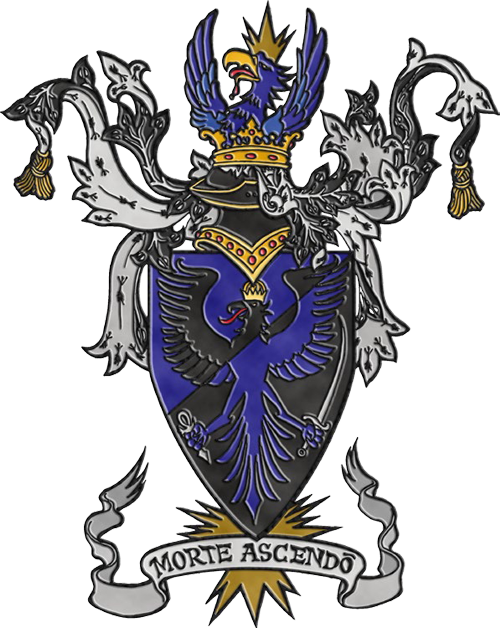
The Lasombra are one of my favorite clans and were originally intended to be a shadowy, har har, antagonist clan. They’re one of the leaders of the Sabbat, along with the Tzimisce, but this is some time before then. White Wolf tends to have a dark, shadowy leader clan in their breakdowns and the Lasombra fill that role, like the Shadowlords do in Werewolf or the Unseelie Courts in Changeling. The Lasombra have a pretty great write up and it’s pretty flavorful.
The Lasombra are the children of Lasombra, most vampire clans are named after their Antediluvian but no all, and he is still around in a way. He’s in torpor in the Castle of Shadows, being watched over by his eldest childe, Montano. Montano is kind of his kind of the manager of Lasombra’s affairs and handles contact or traffic into Sicily by Lasombra. Lasombra doesn’t really contact people from beyond torpor and is allegedly troubled by dark dreams and the Abyss, which is a real place in the World of Darkness.
The Lasombra themselves are usually tied to religion, being true believers in it or using its trappings for personal gain. At this time there an ongoing war in Iberia between the Christian and Muslim Lasombra over dominance of the peninsula, the Shadow Reconquista. Christian Lasombra send aid to the Christians through the Church and the Muslims have begun soliciting outsiders like the Assamites for aid. Jewish Lasombra are typically neutral but the Gentiles vie for them to come over to their side. The Christian Lasombra are also home to the Cainite Heresy. They believe that vampires, due to Caine being marked by God, are themselves holy beings akin to angels. This tends to be viewed as blasphemous by outsiders and a dangerous belief the exposes vampires to mortals.
Appearance: The Lasombra are a diverse bunch and tend to dress extravagantly, even if they are a religious official who is not supposed to do such. It’s all about displaying one’s rank and power.
Haven and Prey: Some Lasombra from wealthy backgrounds maintain their family estates and pretend to be their heir or ancestors. This allows them to feed on their family and servants while maintaining their holdings. Others establish secluded, lavish estates to not draw attention on themselves. The Caninite Heresy often feeds on their congregations, telling their parishioners it is a blessing to be fed upon by such a being.
The Embrace The Lasombra usually embrace childer who were among the wealthy or powerful in life. They will also frequently embrace those from more humble backgrounds if they displace ambition and intellect.
Clan Disciplines: Dominate, Obtenebration, Potence
Weaknesses: The Lasombra cast no reflection and they take an additional level of aggravated damage from the sun or sunlight. They are creatures of darkness after all.
Organization: The Lasombra have a secret society call the Amici Noctis, the Friends of Night. Membership is by invitation and they only invite those who have proven their value to the clan. Within the Amici Noctis are the Courts of Blood, whom any Lasombra can petition to deem a Lasombra unworthy of being a Lasombra. If found unworthy, that vampire can be diablerized without penalty from the clan. If a Lasombra is diablerized by another without the Courts of Blood approving, they are themselves marked for diablerie. They’re powerful in Central Europe but Montano has banned them from Sicily and the Shadow Reonquista has pushed them out of Iberia due to their avowed neutrality in the war.
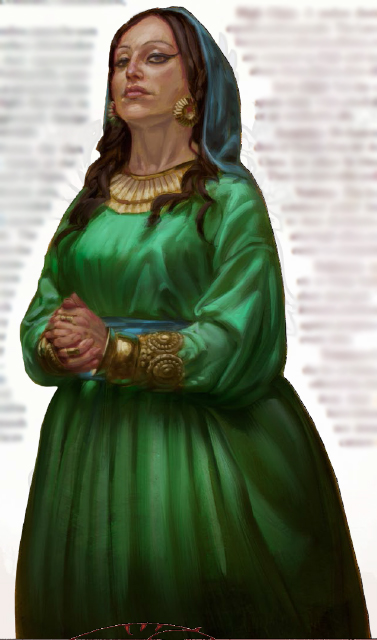
Disciplines
For the write ups on Celerity and Presence, please see my previous post here.
Animalism
Through this discipline the vampire taps into their beast and can communicate or command animals. Without this discipline or the Animal Ken skill, animals will react negatively to vampires because they’re dead and wrong. The reaction is different but it’s your standard, horror movie, animal freaks out because of a monster reaction.
Level One – Whispers to the Wild: This power allows a vampire to reflexively communicate with an animal. If they change themselves to make animal sounds easier, such as turning into that animal, they can communicate easier. The animals will not do anything that puts them in danger or is grossly out of nature for them. They could even run and alert their master if they feel threatened. It’s Doctor Doolittle, not Dominate.
Level Two – Call the Wild: The vampire can call out to a type, either broad or narrow in type, and they will peacefully come to the vampire. If the vampire calls all the wolves in the area, they won’t immediately start mauling them for instance. The number of animals summoned depends on the number of successes made on the test.
Level Three – Songs of Serenity: The Cainite can exert their beast on others, cowing them and making them complacent. It can either be done through fear or by soothing them by bringing them down to your level. This power works on mortals and vampires. Mortals who are affected by this power can’t gain or use willpower. When the power is used on a frenzying vampire, they get an additional roll to resist frenzy and vampires under the effects of this power can’t be driven to frenzy.
Level Four – Subsume the Spirit: The vampire can possess an animal through eye contact. The number of successes determine what powers the vampire can use while possessing the animal. Five successes can allow the vampire to even use powers like Thaumaturgy. When the power ends, the vampire displays nervous ticks and behaviors similar to those of the animal for a number of nights equal to the number of successes made on the activation. They can shake these for a willpower point.
Level Five – Unleash the Beast: The vampire forces their beast from their body and pushes it into the body of a vampire or mortal. If the vampire fails the activation, the vampire enters frenzy. If they get one success on the activation, the beast possesses a random bystander, on two the user is stunned but the transference is successful, and on three or more the beast is transferred without incident for the user. With their Beast gone, the user can’t use or regain willpower and can’t frenzy. The victim, if a vampire, their difficulty to resist frenzy is up by 2 and if they are a mortal, they now have a Beast like a vampire. The user of the power has to coax their Beast back, either by showing they’re the superior host or they can kill the current host.
Dominate
Dominate is essentially the vampire mesmerism power of legend. A vampire, by making eye contact, can force their will upon a target and force them to do what they command. The power has three limitations, you can’t use Dominate on a vampire of lower generation, it just doesn’t work and automatically fails, you have to have eye contact, and the vampire has to be able to verbalize their commands in a common language. The vampire can use gestures or imagery but I would argue the ST has to determine how well the target understands.
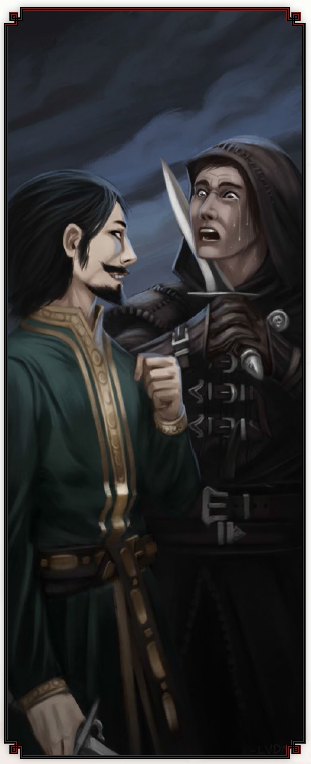
Level One – Command:The vampire can make a simple, single word command that a target must obey if they succeed a test against the target’s willpower. The command can’t be life threatening, directly harmful, and contrary to their Nature. It can be something like, “Stop.” Anything that’s in a sentence doesn’t work. The number of successes determines how successful the command will be interpreted. Indirectly harmful and conflicting commands are more difficult.
Level Two – Subjugation: This is the advanced version of Command. The Cainite can issue a longer command to a target after a period of mesmerism where they don’t break eye contact or are interrupted. The vampire can choose when they act on the directions. A subject can’t follow two dominate instructions at once and the process doesn’t create false memories or illusions. You pretty much get your own Manchurian Cadidate but they will remember the process until…
Level Three – The Forgetful Mind: The vampire can remove memories and replace them with ones of their creation. The more thorough and precise the vampire is, the more effective the rewriting is. The more successes you get, the more memories you can alter. A vampire can also see the signs of use of Forgetful Mind with this power as well.
Level Four – Conditioning: After an extended test gaining a number of success equal to 5 times the target’s Self-Control or Instinct, the vampire can strip a subject of their personality and fully control them. Once under the effects of conditioning, the target can be Dominated by the user without eye contact and the user is at -2 difficulty to use these powers against them. Other vampires who attempt to dominate the target have to do so against the master’s willpower if higher and the target of Conditioning can spend a willpower to interpret this Dominate command as contrary to their nature.
Level Five – Possession: The vampire, after engaging in a clash of wills with a target, erodes their willpower to 0 and possesses the target’s body. The more successes the user gets, the more disciplines they can use in their new body. Like with Animalism, 5 successes lets the vampire use all of them. If the original body of the user is destroyed, they can remain in the host body but must test to stay in the body every sunrise. If they fail this test and their body is gone, their soul is lost in the astral plane. The vampire can’t be embraced in the new body, they just die. I imagine this is because a vampire’s soul is already “dead” but that’s a vague and complex thing that comes out WoD metaplot chat.
Fortitude
A character’s level of Fortitude gets added to all Stamina dice pools, including their soak rating for bashing and lethal damage. The vampire can also use their Fortitude level in dice to soak aggravated damage, which vampires normally cannot soak and mortals can never soak. Once per turn they can spend a blood to automatically soak their Fortitude rating in damage, including aggravated damage that is not from fire or sunlight. It’s generally a good investment as a discipline and greatly increases the vampire’s survivability.
Obtenebration
Obtenebration is the control and shaping of shadows. No one really knows where this power originates, as it seems like it’s drawing on more than simple shadows. Ancient Lasombra believe it draws on a primal being, such as Ahriman from Zoroastrianism. Others believe that is draws from a realm of shadows, such as the Hell of the Abrahamic faiths or the Tartarus of Ancient Greece or Roman. More scientific Lasombra believe it’s the manifestation of the Lasombra’s vampiric nature made manifest. Which is pretty Lasombra because they’re all about having the will to power. The power, regardless of its origins, is terrifying and unnerving, defying explanation and natural law.
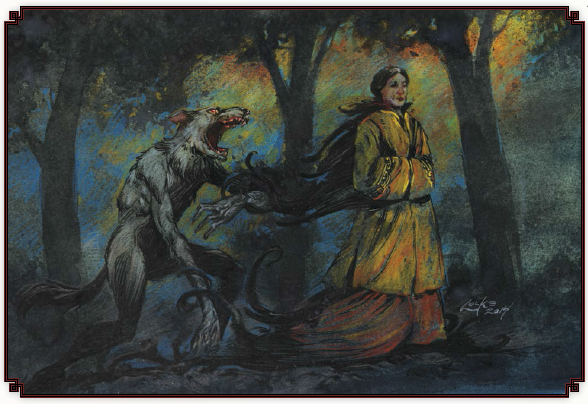
Level One – Shadow Play: The user can move and control existent shadows, they cannot create them with this power. The shadows can be moved from their original sources as well. These shadows can be used to improve social rolls, making the target dramatic or intimidating, or to help stealth rolls.
Level Two – Nocturne: The vampire can summon a cloud of darkness that engulfs an area and blocks out light. The cloud is 10 feet in diameter and can be created within 50 yards of the user. The creator has to concentrate on it as well or it disappears once their concentration is broken. Perception checks receive a steep penalty but uses of supernatural sight powers, Auspex or Protean, and the Darksight merit reduce this. The cloud, a breach from the Abyss, saps two from Stamina pools and if this reduces a mortal to zero, they suffocate.
Level Three – Arms of Ahriman: The vampire creates tentacles of darkness that they can wield and manipulate as though they are appendages. The character can create one, six foot tentacle per success that must originate from a source of darkness within 20 feet of the caster. The tentacles share the Strength, Dexterity, and Stamina of the user and can be made stronger or longer by spending blood. Each tentacle has 4 health levels and doesn’t soak aggravated damage. The use of this power requires concentration too so you’re not illuminating a manuscript or anything while you beat a peasant to death with your shadow arms. It’s expensive too if you decide to beef up the tentacles because modifications are done on each tentacle individually.
Level Four – Nightshades: The vampire can create shapes and illusions out of shadow. Each success can create a human sized illusion or can be pooled for a big one. It’s hard for onlookers to see through these illusions, which is a difficulty 9 test. The user can alternatively show the onlookers the Abyss and its denizens, casing fear in those without Obtenebration, lowering all their dice pools by 2 and initiative by 3.
Level Five – Tenebrous Avatar: The vampire can become an avatar of the Abyss after spending 3 blood points and spending 3 turns transforming. The vampire cannot deal or receive physical damage but can summon the Arms of Ahriman from themselves for a blood point. The vampire can also engulf a victim in shadows, which reduces their dice pools by the user’s Obtenebration rating. If the target is a mortal, they are smothered if their stamina is reduced to 0. This is a level 5 power and the max Stamina for a mortal is 5, you do the math. The vampire, once becoming darkness, destroyer of worlds, takes twice as much damage from sunlight and fire and 1 to the difficulty of Rotschreck tests. Unsurprisingly, beings of darkness from the darkness Hell dimension hate fire and sunlight.
Potence
Each dot of Potence adds one die to all Strength-based dice pools. Spending one blood turns a dice roll into a number of automatic successes equal to the vampire’s dots in Potence. This also translates over to damage rolls in hand to hand combat. This power has a lot of utility and can be pretty powerful at higher levels.
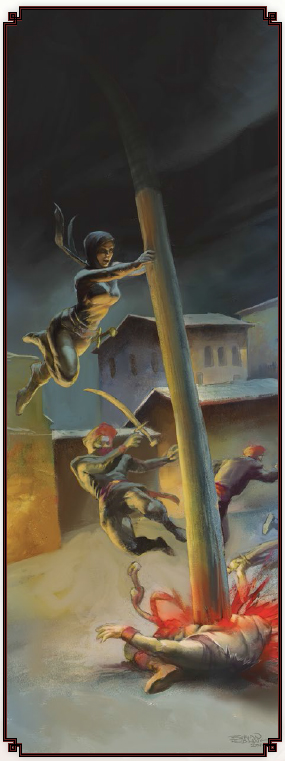
Protean
This is a transformative power that focuses on the user, unlike Vicissitude, and allows them to take on qualities of their beast. The vampire can use most Cainite powers once changed but it’s up to ST discretion. Items close to the vampire’s person and not bigger than a large hip bag. That means things like cloaks, swords, or large packs are going to get left behind.
Level One – Eyes of the Beast: The vampire’s eyes glow and they can see in the dark. This power lowers dice pools for social rolls with mortals, obviously because you are a satan, but raises dice pools for intimidation.
Level Two – Feral Weapons: The vampire can reflexively push talon like claws through their hands, feet, or even from their head or face as horns or tusks. The claws deal Strength +1 aggravated damage so the vampire would be pretty lethal to other vampires and rip through mortals like tissue paper, remember they can’t soak aggravated damage. This can be combined with Potence by the way if you can afford to use both at once. Climbing becomes more difficult because you’ve pretty much become Lady Deathstrike. I would also rule that fine manipulation is impossible because you have unwieldy monster claws.
Level Three – Earth Meld: The vampire can merge with the soil after spending a blood point and a turn becoming one with the earth. The vampire can sense danger and rolls their Road rating to arise and deal with the threat. Digging out the vampire requires a five success strength roll and the vampire will awaken, angry and ready.
Level Four – Shape of the Beast: The vampire can change into the shape of animal that’s determined by the local vampire myth. The process takes three turns. Most vampires in the Christendom can turn into a bat or wolf and it’s always a flying form and nonflying form. In this form they can use disciplines if it makes sense but a wolf isn’t going to be doing Necromancy. The rules for a wolf, bat, and rat are presented. The wolf and rat can do aggravated damage but their strength is reduced to that of their form. A vampire in rat form isn’t going to be caber tossing.
Level Five – Lurking Mists: The vampire can spend a blood point and turn into a cloud of mist. This transformation takes three turns and allows a vampire to move through cracks and move across the narrowest of ledges. They can be blown of course by a strong wind but they can’t be broken apart. The Cainite can also use any disciplines they would physically be able to use but they can’t attack anything, including other vampires in mist form. The power is pretty straightforward and I would imagine it’s incredibly useful on your average blasted moor or moonlit bog. Only aggravated damage can harm the vampire but fire and sunlight do one less die of damage.
BONUS ENTRY: Abyss Mysticism
Abyss mysticism is a series of rituals that are an outcropping of Obtenebration. You can’t do Abyss Mysticism without having ranks in Occult, at least 3 ranks for Occult, or Obtenebration. It’s also harder to do rituals without an Occult specialization in this area. The level of rituals you can do is capped by your highest ranks in either, up to level of 8. Among the Lasombra it’s kind of a niche thing. Most view Obtenebration as a tool and not something to study further. These rituals also involve communing with a Hell dimension so most religious Lasombra avoid it for that reason and those on a Road other than the Road of the Abyss quickly give in to their beast due to studying the Abyss. Using these rituals marks the users and can confer Flaws on the user because again, you are tampering with a Hell dimension. No seriously, this is where God sent the fallen angels as revealed in Demon the Fallen. It’s the closest thing there is to a Christian or Islamic Hell in the WoD.
Level One – Pierce the Veil: The caster conjures a ball of darkness they look into that gives them the Darksight merit. The vampire’s eyes turn jet black and have no reflection in order to reflect taking on the mien of the Abyss. If they fail, nothing happens, if they both, the effect becomes permanent and they gain it as a flaw.
Level One – Eyes of the Abyss: The caster summons Abyss elementals through a ritual where they crush a bare flame with their hands, not that easy for vampires. Once they succeed the Rotschreck test and the Occult test, they summon a tiny Abyss elemental. The elemental is incorporeal and obeys all commands. It can mentally communicate by entering a person’s shadow but if they communicate with a non-mystic, they have to make a courage test and gain a derangement if they fail. On a botch, the derangement is permanent. The elemental ca fly 30 yards per turn but is instantly destroyed by fire or sunlight. A level two version, Talons of the Abyss, exists and is the same but the shadow elementals can interact with corporeal world and attack.
Level Two – Subsume the Darkness: The user meditates on the Abyss for a full turn and calls upon it to heal any damage they have. A both causes one level of aggravated damage. Each success allows the vampire to heal 2 levels of lethal damage or 4 bashing with a blood expenditure, about double healing, and ignoring generation limits. The Abyss in turn consumes blood the vampire gains from feeding until it has been paid back the difference in healing costs. The ritual stains the user’s soul, causing the mystic’s blood to turn unnaturally black, to a degree where it absorbs all black. Any mortal who sees the vampire’s blood has to make a Courage check or be shaken by the sight, taking penalties.
Level Three – Balthazar’s Revelation: The ritual originates from the Kiasyd bloodline, who are originally a Lasombra bloodline and are now much broader during the dark ages. The user enchants a small object, like a coin, and the person who picks it up is afflicted by a derangement of the caster’s choosing and sees shades and other entities if they fail a Willpower roll. It’s a level 9 difficulty but they subtract their Obtenebration rating from that. This hampers their Perception and Courage rolls.
Level Three – Calling the Hungry Shade: The caster paints a circle in their own blood and summons a hungry shade. The shade’s state levels are equal to the vampire’s Obtenebration levels but caps out at 4. The difficulty for the summoning is 9 but it lowered by each additional participant up to the main user’s Occult rating. The shade is the size of an adult human, has the same rating in Obtenebration of the caster and any other disciplines the caster knows equal to their Obtenebration levels. If the ritual is botched, the shade attacks the summoner.
Level Three – The Third Eye of Richard Argentis: The caster spends 10 minutes and summons an eye on their forehead. When summoning it, they choose how much blood they invest in it, and it will reflexively protect the user from ambush. The eye will spend one blood to automatically react to the surprise and summon and Arm of Ahriman that can act immediately. The user can expend more blood traits from the Eye to summon more. Once all the blood is expended, the eye dissipates.
Level Four – Reflections of Hollow Revelation: The mystic summons a Nocturne, the suffocating shadow cloud, and shapes it into a scrying orb. With it, the mystic can look upon one object, place, or person that they have personally witnessed. This lasts a scene or until the target leaves the vicinity. This requires concentration and makes the caster less aware of their surroundings. Characters with Obtenebration or Auspex have a chance to notice someone or something watching them from the shadows.
Level Five – Whispers in the Dark: The vampire summons a Nocturne like in Hollow Revelation but thinks on a single question. The caster then swallows the Nocturne and goes into torpor as their consciousness goes to the Abyss. The caster makes occult checks until they’ve amassed enough successes to answer their question. Each roll takes place over a night and if the caster fails a roll, the gap between nights gets longer and longer. The caster, when returned to their body, is forever tainted by the Abyss. They have a -1 difficulty to intimidate targets and +1 difficulty on social rolls. This is not cumulative so you can do it multiple times and not accrue more penalties.
The next post in this review will cover the Cappadocians and Necromancy.

Chapter Two and Chapter Five: The Clans of Caine and the Gifts of the Blood
Original SA post
Chapter Two and Chapter Five: The Clans of Caine and the Gifts of the Blood
Cappadocians
Nicknames: Necromancers, Graverobbers
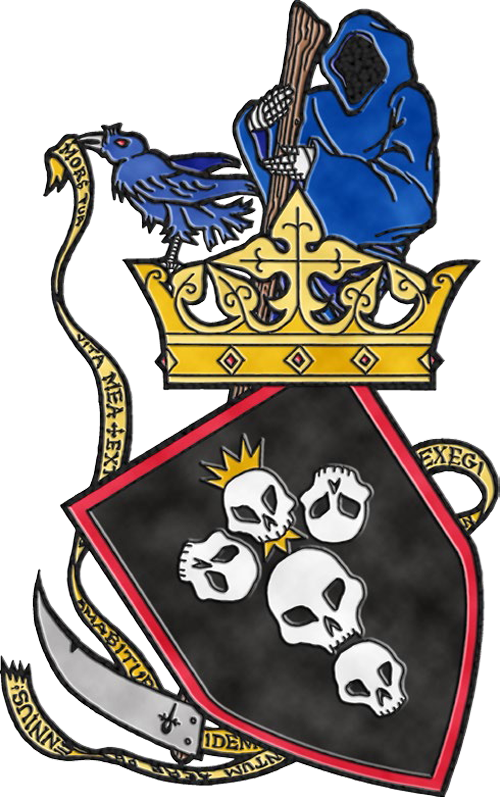
The Cappadocians are a clan that's unique to Dark Ages Vampire and get replaced by the Giovanni in modern times. Some of them are still around, they're the Harbingers of the Skull, but they're rare and usually NPC level characters. Their Antediluvian is still around too, he's crazy and if I'm remembering correctly he wants to diablerize God as part of his weird conception of vampire Christianity.
The Cappadocians are pretty much a clan of introverted vampire necromancers. They generally act as lorekeepers and historians for vampires and seek to master the undead state through using necromancy. Their clan founder is still around, Cappadocious, and he still interfaces with his clan. He’s pretty much a crazy person though, sometime dispensing wisdom to his clan’s elders but other times to grand, apocalyptic visions. He’s a necromancer from before Noah’s flood, it’s kind of expected I guess.
Necromancy is a close guarded secret of the clan. The Cappadocians pretty much have a monopoly on the discipline and only their offshoot clans practice it. In modern nights the Giovanni have this distinction but during the Middle Ages they are a client bloodline of the Cappadocians.
Cappadocians rarely seek temporal power as well and don’t generally want to become princes, it’s hard to read when you’re running a domain.
Appearance: The Cappadocians are a varied and cosmopolitan lot and tend to dress conservatively. They were usually members of religious orders or scholars in life and they tend to keep dressing accordingly to that. They do tend to cover themselves in public due to their clan weakness and wear veils or hoods. Some like to wear masks, which is foreshadowing to Harbingers of the Skull, their modern Sabbat and as of V20, True Hand aligned survivors.
Haven: Cappadocians prefer practicality in their havens and feeding. They feed on what they can easily feed on and like secure havens. Easy access to corpses is a must and they don’t mind feeding off corpses either. Most vampires tend not to drink dead blood, it apparently tastes bad, like stale coffee.
Background: Cappadocians don’t embrace lightly and are very particular about who they embrace. Mystics, religious officials, scholars, and similar people from educated and spiritual backgrounds are chosen. The clan is diverse though and an inquisitive mind and having insights into life and death can make more of a difference than what their previous background was.
Editorial Note: It doesn’t mention it but Cappadocious once sealed away a number of in an underground city in an event known as the Feast of Folly. He was pretty pissed off when he found out members of his clan were just embracing wantonly, as is the spirit of the times, and invited them all to an underground city he made. He asked them a series of questions related to how they had met with the ideals of his clan and his vision for the clan. Those who answered incorrectly were sealed in this city and he forced the mortals to flee the city above it so no one could find it. You can kind of get the picture as to why the Antediluvians are unpopular among their own clans.
Clan Disciplines: Auspex, Fortitude, Necromancy
Weaknesses: All Cappadocians have a corpse like pallor about them and it gets worse as they age. Most Cappadocians elders tend to look like desiccated, mummified corpses. They have a +2 difficulty on social rolls with mortals because they look like corpses. This is why they cover themselves in public.
Organization: The Cappadocians are pretty organized as a clan because Cappadocious is out and about. Every decade he calls a meeting of the clan at an underground city he built or maintains, I forget, called Erciyes and they have a type of symposium. They look over and debate Cainite lore and share their own knowledge. These gatherings are generally not compulsory, it’s the Middle Ages and it’s not easy to get around, but being close to Erciyes and attending gets you brownie points. Smaller, regional gatherings also occur but they are far less formal than the big clan one.
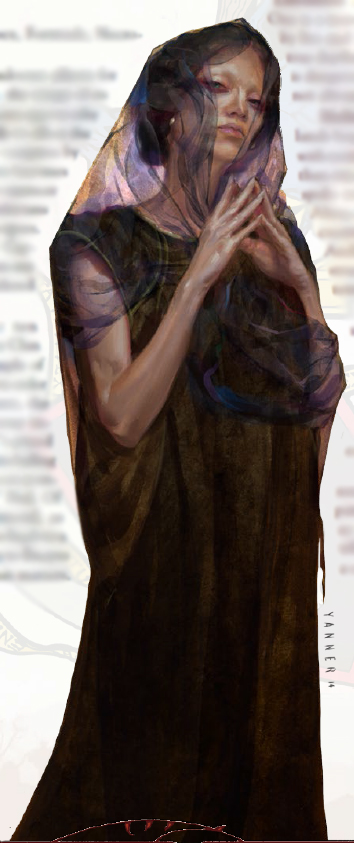
Disciplines:
Auspex and Fortitude were covered in a previous post so the only new discipline to cover is Necromancy, which has branches and rituals.
Necromancy
Necromancy itself is not a single discipline but a school of Cainite magic that uses blood to power it. Necromancy, and the other vampire magic schools, is not on par with Awakened magic, which is what Mages use. Therefore they don’t have the same hindrances, such as invoking paradox, but are less dynamic, freeform and are all done the same for every user of that path. There are also rituals in necromancy like in thaumaturgy. When you buy a rank in a path, you get a ritual. Cappadocians favor the Paths of the Corpse in the Monster and the Grave’s Decay.
Sidenote: The book at this point mentions some things about ghosts, which have far more written about them than their counterparts in Chronicles of Darkness and they have their own splat in WoD, Wraith. Ghosts live in a world that’s a dark reflection of our own, though everything is older and weirder. Everything is drained of color, everything natural is dead or dying and structures are decaying. Mortals on the verge of death also show up in this world with marks of death around them. They mention there are darker realms beyond this realm, there are, but ghosts don’t usually go that far.
Ghosts have their own society and culture unique to the dead. They also sometimes hoard Relics, powerful or popular items that once destroyed appear in the land of the dead. These can also include giant structures like the Colossus of Rhodes or the Tomb of Mausolos. Although these items can be valuable to a necromancer, they are well guarded and leaders of the Underworld closely guard their Relics.
Path of the Corpse in the Monster
This path is based on studying corpses and using the knowledge gained, along with rituals, to apply aspects of it to vampires.
Level One – Mortuss in Vultus: The caster can make themselves or another look like a mummified corpse. It lowers the target’s Dexterity and Appearance and it requires a touch attack to use it on another. If the target remains still, it’s very difficult to distinguish them from a corpse so it’s good for hiding. It’s also good for lowering a target’s dexterity in a fight.
Level Two – Algor Mortis: This power allows the caster to eliminate all of their emotions. Their flesh becomes colder and their breath freezes in air when speaking. They ignore wound penalties for a scene and gain a bonus die for each level of Path of the Corpse in the Monster when resisting emotional manipulation. It conversely increases the difficulty to manipulate others. It does not ward off frenzy, which has a normal chance of happening.
Level Three – Intimations of Mortality: The caster causes the target to be afflicted by unpleasant mortal sensations like hunger or having to relieve themselves and they are unable to stop these sensations. All actions taken are more difficult and the target can’t spend a willpower to ignore them. The target also can’t spend blood to raise physical attributes. They can still use physical disciplines during the duration of Intimations. The effects last until the next sunrise.
Level Four – Benedictio Mortem: For every success rolled on this power, the vampire becomes like a corpse for a turn. During the effects of this power the vampire is immune to frenzy and the effects of a stake through the heart, fire only does lethal damage, holy artifacts have not effect, and is only affected by sunlight if it is on their bare skin and even then it only does bashing damage.
Level Five – Benedicitio Vitae: The vampire spends 12 blood points, which don’t need to be spent in a single turn and they can spend while feeding, and becomes like a mortal. They can go out in the sun, where they take no damage and have no compulsion to slumber. They can still be staked and are affected by holy artifacts though. The vampire is also at half difficulty to resist frenzy. The power lasts until the next midnight after casting but once it’s done the difficulty to resist frenzy goes up by 3 for the next 6 nights.
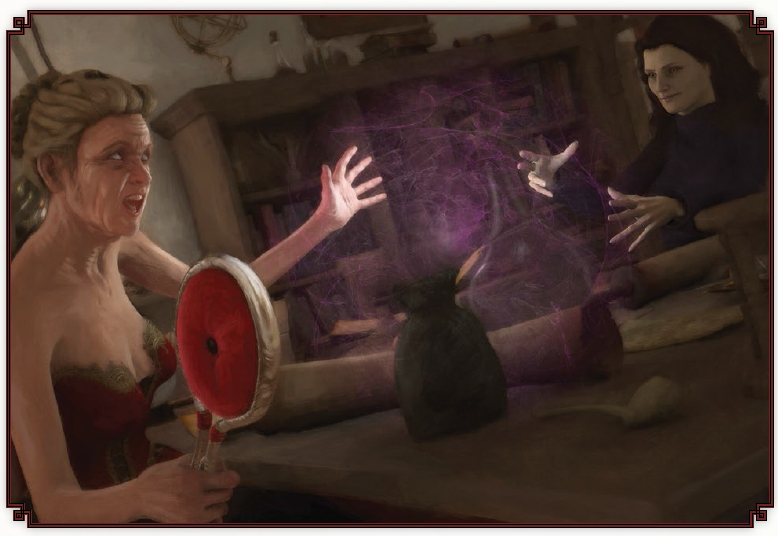
Path of the Graves Decay
This path is based on the necromancer harnessing decay and entropy.
Level One – Ashes to Ashes: The vampire spends a blood and drips it on a human corpse. The corpse disintegrates into ash over a period of 5 minutes, minus 1 minute for each success. If they botch, the corpse putrefies but loses no integrity.
Level Two – Rigor Mortis: The caster freezes a target in place for 1 turn per success. Frozen targets can’t spend blood points or move. Cainites can take physical actions with a penalty equal to the caster’s success.
Level Three – Ashen Lady’s Embrace: The caster touches a limb of the target, arms, legs, hands, fingers, eyes, mouth, nose, etc., and deals two aggravated damage to that limb. The limb dries out and withers and if something small, like eyes, turns to dust. Vampires can soak and heal as aggravated damage and mortals are screwed since they can’t heal aggravated damage. Targets gain appropriate flaws for the damage if healed. If you’re a mortal, enjoy that Middle Ages crippled life.
Level Four – Gift of Melancholia: The caster infects a target within twenty yard within their line of sight with a terrible, flu-like contagious disease. If the victim fails to get more successes than the caster in a contested roll, the victim has their Strength and Wits halved, Dexterity decreased by 1, Cainites spend 1 extra blood to raise every morning and mortals take 1 lethal every morning. Cainites have to roll Self-Control when feeding or vomits up the blood, gaining nothing. Mortals get no roll and vomit up their stomach’s contents. The victim rolls stamina each day against a difficulty of 10 that decreases by 1 a day.
Level Five – Dust to Dust: The necromancer cuts open their skin, spends two blood points and a point of willpower, and then drips blood on their target. It has to be dripped from within touch range on the target, no flinging. The necromancer rolls against the targets Stamina plus 3 and every success deals 1 aggravated damage. Every 2 damage causes an appropriate limb to shrivel up like Ashen Lady’s Embrace.
Necromancy Rituals
Rituals are magic powers that can be invoked by necromancers in a fashion different from Paths. Paths are more intuitive and follow a theme too while these are more general. Some have been created by clans or bloodlines while some are even rumored to have been taught by mages. I will spread out the rituals among the entries for the necromancer bloodline entries.
Level One – Call of the Hungry Dead: You can use this ritual to talk to the dead or have them harass a rival. The caster chants and throws out some black beans for about 10 minutes. The caster then lights a black candle and burns a single hair from the target in the flame. The target can now hear the dead. If the target doesn’t get more successes than the caster, they just hear wails and howls. If they succeed, they hear them speak but are at a greater difficulty on all rolls due to the distractions. It lasts for the duration of the candle.
Level Two – Hand of Glory: This ritual creates the titular item, a candle that when lit causes all mortals within a residence within 50 paces to fall into a deep slumber or remain asleep if already asleep. The hand is constructed from the left hand of a hanged felon, which is mummified through an involved process. The hand is placed in a jar with saltpeter and peppercorns. After a fortnight, the hand is coated in wax made from tallow rendered from a condemned man’s fat, it doesn’t say the owner of the hand by the way. Each finger can be lit once and the power remains in effect while the candle is lit. It can only be extinguished by blood or milk. If any residents are awake, I don’t really know how but I’m guessing they’re not mortal, it doesn’t say, the fingers on the hand curl for each person. If the caster botched the ritual, the hand lights as normal but the effects don’t occur.
Level Three – Din of the Damned: The caster seals a place against eavesdropping by drawing a line of ashes on the ground. If the line is not broken, all listeners hear are the faint echoes of the Underworld in a fashion similar to Call of the Hungry Dead. If the listener uses supernatural means, like Auspex, they can listen in if they get more successes. If the they botch the roll, they’re deafened for the rest of the night.
Level Four – Vision of St. Anthony: This ritual allows the caster to grant others the ability to see into the Underworld for a number of hours equal to the caster’s Stamina score. The caster enchants a handful of wheat infected with ergot in an hour long ritual. Every success creates three doses. If successful all toxicity is removed from the ergot. If the ritual is botched, the caster created three doses of highly-toxic wheat that inflicts eight dice of lethal damage on anyone who ingests it, vampires included. This can outright kill a mortal or put a vampire into torpor.
Level Five – Orphic Sojourn: The vampire dresses themselves in funeral garb and grave goods. They lie down and meditate from dusk until midnight, when their soul separates from their body. She can then wander the Underworld as a ghost does for a number of hours equal to the successes achieved. They cannot return with Relics from the Underworld. There's another ritual for that though.
Chapter Two and Chapter Five: The Clans of Caine and the Gifts of the Blood
Original SA post
Chapter Two and Chapter Five: The Clans of Caine and the Gifts of the Blood
Malkavians
Nickname: Cassandras, Children of Malkav, Seers
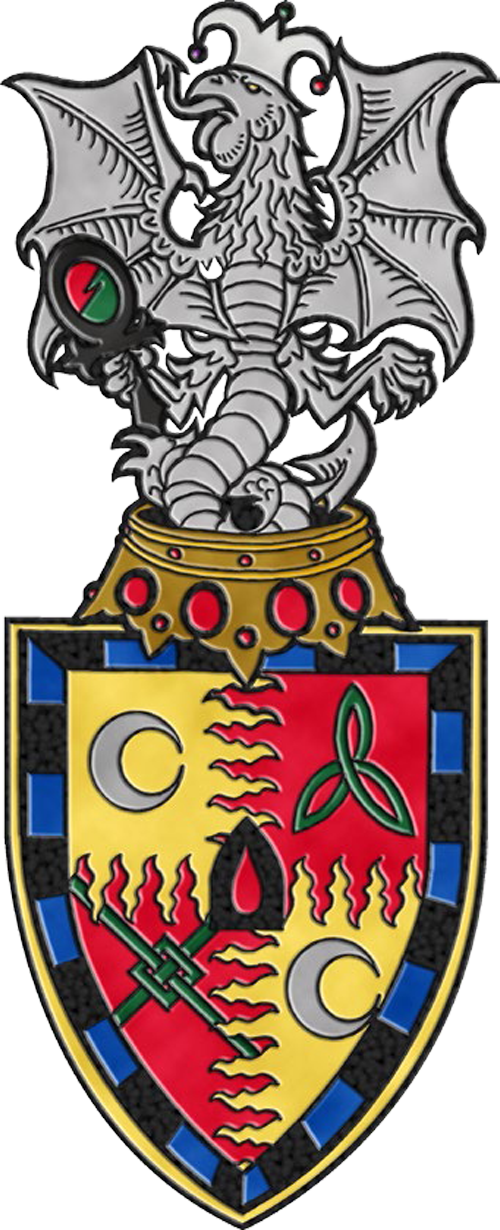
Malkavians are kind of a clan that can go either way for most people and for good reason. One big aspect of this swing is that they depict mental illness in a way that is not really flattering and often used for comic relief. Regardless of the original intent, the “fish Malk,” which originates from Dark Ages, is what a good deal of people familiar with the clan think of when Malkavians are brought up. This mostly comes from people being unable to properly play a character like a Malkavian, it’s hard, and the way mental illness works in World of Darkness is most likely based on Call of Cthulhu’s take on mental illness because it was one of the only major games with it at that time.
In V20 Dark Ages, the Malkavians are at a crossroads and neither way looks good. The Malkavians at this time are commonly called Cassandras, after the character from the Iliad. Cassandra was given the gift of prophetic visions in one way or another, Apollo is a common source but apparently also snakes, but no one believed her. Malkavians are the same but instead of disbelief, they are cursed by mental illness. The book states that in 1242, the Classical concept of the humors influencing one’s mental health is falling to the wayside. The Church is now pushing an explanation for mental illness that attributes it to sin. This is generally bad for Malkavians because instead of Classical cures being used on them, they’re getting investigated by the Church and possibly persecuted.
Malkavians are generally stereotyped as seers at this time and are valued for this skill but that usefulness is coming to an end. Although the War of Princes is in full swing, the Malkavians know it will be over soon and when it is, their usefulness will wane. Even though they’re a low clan, they still get jobs as court seers and as accessories for Princes wishing to boast of how aware they are of what’s really going on. Some Malkavians view this as a need for them to double down on prophetic visions in order to bring themselves up, creating seer cults called Ordo. These Malkavians taught their beasts, torture themselves, and experiment with psychotropic laced blood in order to find wisdom by taking themselves to the edge of physical and mental safety. Some of these Ordo have been successful and share this knowledge with other Malkavians in order to raise up their lot and return the clan to their original, important position.
The Malkavians over the centuries have also made many enemies from their prophecies. As stated in the Brujah entry, the Malkavians had the ear of the Ventrue when they sacked Carthage and the Brujah have not forgotten this. The Malkavians know that it had to be done because of the Brujah being in league with the Baali but the Brujah won’t acknowledge that. Cainites, just like humans, generally hear what they want to hear and pick apart the messenger in response to the bad news.
Appearance: Some Malkavians look the part of a crazy person but they’re not common. The Church, Cainites, and sometimes their clanmates usually eliminate them because they stand out and that’s a bad thing for everyone, especially with the new direction the Church is going. The usual look of the Malkavians is bland normalcy. They learn quickly not to draw attention to themselves and to blend in for their own protection.
Haven: Most Malkavians choose havens that blend in at. The example given is a monk who lives in a monastery. It’s rare for them to keep lavish havens because it draws attention and trouble.
Backgrounds: Malkavians embrace based on unique needs and interests. No two Malkavians are the same and they view this as a strength. Not being predictable makes them hard to pin down. Most Malkavians are calm individuals and have an inherent sense of judgement. The embrace tends to magnify passions in Malkavians and passionate people usually make explosive Malkavians. Some Malkavians embrace loud and brash people in times of crisis to make warriors to fight for the clan though.
Clan Disciplines: Auspex, Dementation, Obfuscate
Weakness: All Malkavians have a derangement they can’t have cured and lose by spending experience points. Malkavians can only temporarily suppress the derangement by spending a willpower. Supernatural means used to cure it, such as using the discipline Valeren, a Salubri discipline that can cleanse the soul of a target, only cure it for a night. After that, the derangement comes back in full force and cannot be resisted with willpower for a week.
Organization: The Malkavians don’t really organize that much for fear of mortal persecution or fear of the Brujah marching on them as a threat. Outsiders often believe that the Malkavians secretly communicate and change their stories to sound alike but this is just a rumor.
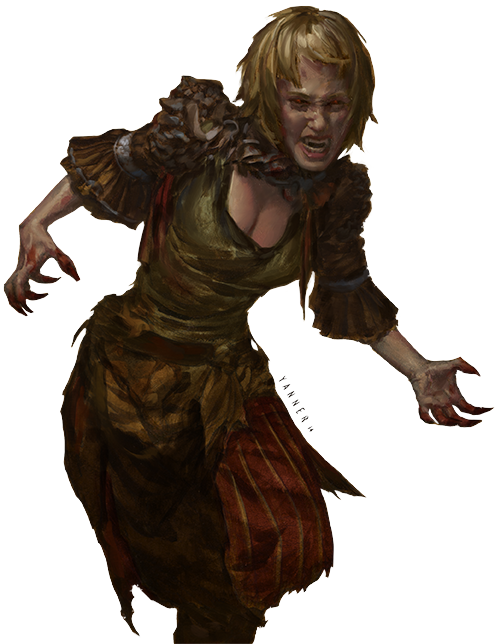
Nosferatu
Nicknames: Priors
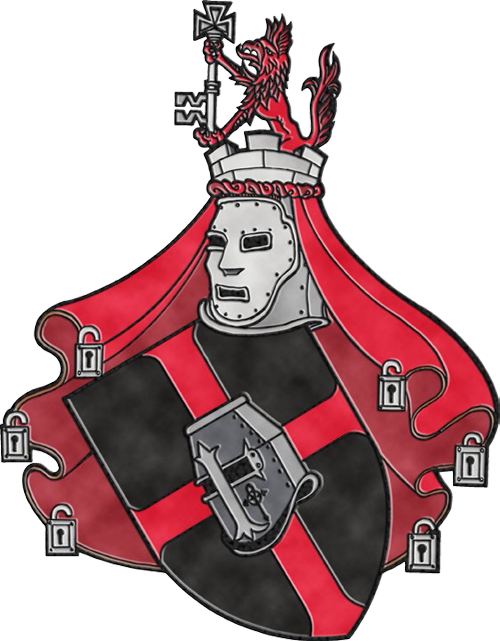
The Nosferatu are a clan obsessed with secrets and seek them out everywhere. This causes the Nosferatu to search everywhere for secrets and to dig deeply for them, sometimes literally since they live underground a lot. The Nosferatu as well believe that blood holds secrets and the dark secrets their blood holds causes them to have their cursed, hideous appearance.
The clan founder of the Nosferatu, Absimiliard, was said to be a covetous, beautiful person, obsessed with their own beauty who was cursed by Caine to be hideous for his crimes. Since then it’s said that Absimiliard has sought to kill those who have spurned him, including his old clan. Rumors tell of whole villages in the East being wiped out by blood witches hoping to kill one Nosferatu. The Nosferatu believe these are just rumors but still hoard knowledge to defend themselves because they know they are hunted for what they know and the only way to come out on top is to double down on learning stuff.
Learning secrets is a profitable business and Nosferatu are valued for their work by Princes and elders. Nosferatu are also more than happy to part with mundane secrets for profit because they’re just the cruft of what they’re really after.
Appearance: All Nosferatu is hideous and this ugliness is unique and personal to a Nosferatu. Some have claimed that it can sometimes be darkly poetic, representing that person’s inner ugliness in life.
Haven and Prey: Nosferatu tend to dwell in dark, forgotten places. They do this to escape notice and to hide away all the lore, documents, and lost artifacts they find or to possibly find new, buried secrets. Old Roman sewers and necropolises are given examples, as are crumbling, abandoned wings of castles or the basements of abbeys.
It’s rumored they keep giant rats and keep secret pools of blood to feed on. Despite being the easy targets, the disenfranchised are not the first targets of Nosferatu and they like to make their feeding moral lessons for those within society that they believe need to be dealt with.
The Embrace: The embrace is incredibly painful for Nosferatus because they become a Nosferatu over days, sometimes weeks. Their bodies gradually warp and painfully change into the hideous forms they’re known for.
Clan Disciplines: Animalism, Obfuscate, Potence
Weakness: Nosferatu permanently have 0 dots in appearance because they’re fug ugly. They fail all first impression rolls, other than to intimidate, for this reason so making a Nosferatu social butterfly is not an easy task.
Organization: Nosferatu are a tight clan and generally all work together. Nosferatu who live in cities will often live together in a large warren and maintain it together. Respect within the clan is gained by who and what you know, as opposed temporal political power.
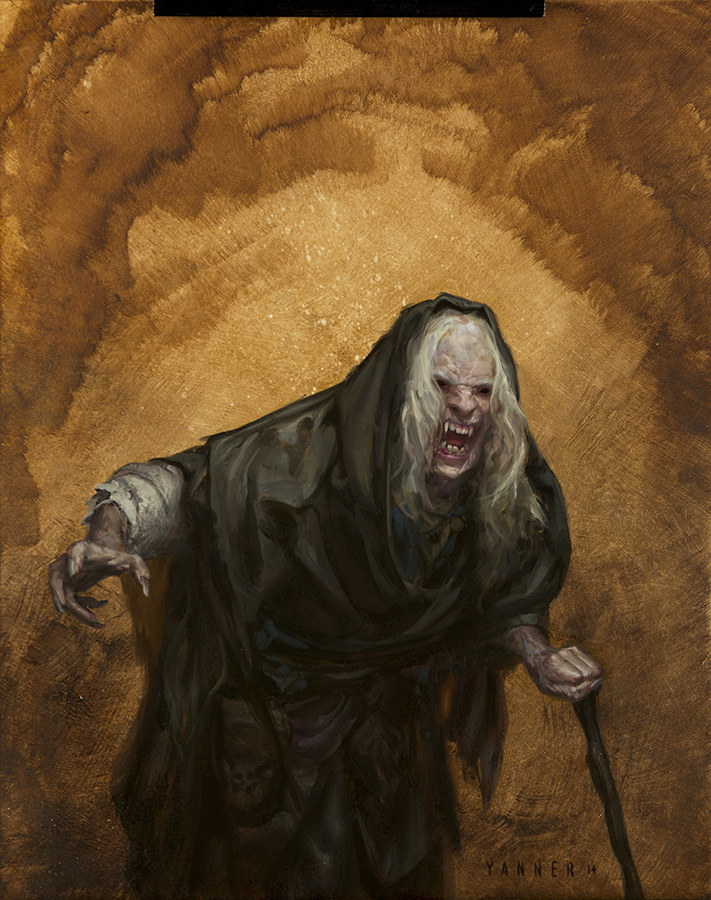
Ravnos
Nicknames: Shapers, Charlatans, Seekers, Vagabonds, Unwelcome
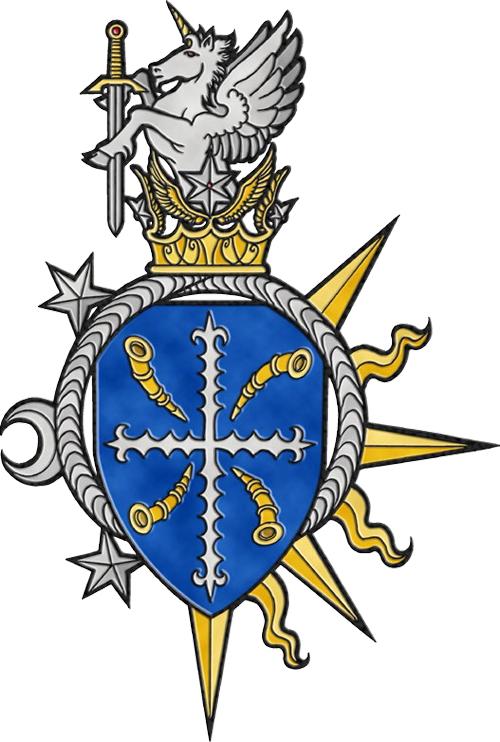
The Ravnos are one of the most problematic clans in Vampire because of past depictions. Previously White Wolf leaned pretty hard on the “gypsy trickster” angle and that’s all I really want to say on that. White Wolf gradually moved more towards the Indian angle and Onyx Path chose to focus on that here.
Ravnos are not very well liked by most Cainites for a number of reasons. They have a reputation as lying tricksters because they subscribe to a philosophy that reality is an illusion, maya, and they are masters of that illusion through Chimerstry. Elders of the clan trace their lineage back to India, where they claim their Antediluvian originated from and travel in groups called jati. Younger Ravnos generally don’t subscribe to this ideology but follow its spirit, believing that because they can control illusions, that the world is their domain and they are above rules and laws. Ravnos most commonly use their powers to deceive and take advantage of others, like vampire snake oil salesmen or hucksters. This of course gives them a bad reputation among Cainites and they are generally treated poorly because of it.
Appearance: Ravnos tend to dress in adaptable traveling clothes that allow them to conceal items and layer appropriately. Elders often dress in South Asian attire, wearing brightly colored saris and sarongs but younger Ravnos prefer their native styles.
Haven: Ravnos tend to haven in roadside places like caravan camps and inns. They are constantly traveling so they don’t make permanent havens. They generally have a knack for finding out of the way places to haven in too, like secluded towns. Ravnos as a rule do not haven within a city held by a Prince because it makes it harder for them to operate. Princes as a rule though generally don’t arbitrarily punish Ravnos because it could draw the clan’s wrath on the Prince.
Clan Disciplines: Animalism, Chimerstry, Fortitude
Weakness: The Ravnos has a type of set behavior that they have problems resisting to do when it’s possible to do such. This can be something good like protecting the weak or something bad, like taking advantage of someone in a weaker position than your own. Usually jati will have this trait in common but it’s not set in stone. Ravnos have to make a Self-Control or Instinct roll to resist engaging in this activity.
Organization: The Ravnos appear to be an unorganized rabble but they follow a code of honor and the traditional jati grouping system, which is generally subdivided into castes. Although they generally don’t trust each other, they do uphold an honor system that prevents them from truly turning on each other and pushes them to protect each other. There are often rumors of scourges and seneschals being given their comeuppance by the Ravnos after they ran a member of the clan out of domain or destroyed them.
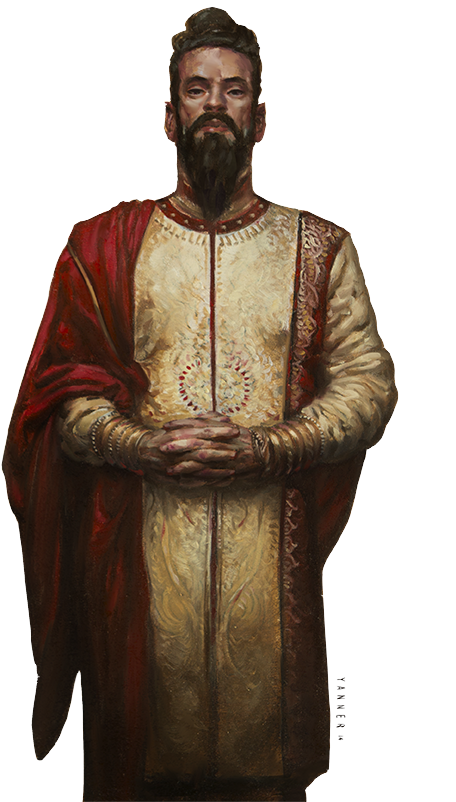
Disciplines
Chimerstry
Chimerstry is the signature discipline of the Ravnos. Debate within the clan differs as to what the power originates from. Eastern Ravnos who maintain their ties to India claim it’s an embodiment of their enlightenment and ability to see past maya. Western Ravnos attribute it to their founder drinking the blood of fairies. Either way, it’s a powerful discipline that targets can’t resist unless they have Auspex or prove the illusion is not real. The more fantastic the illusion, the easier to see through, and physically interacting with an illusion that’s not solid will result in it being dispelled.
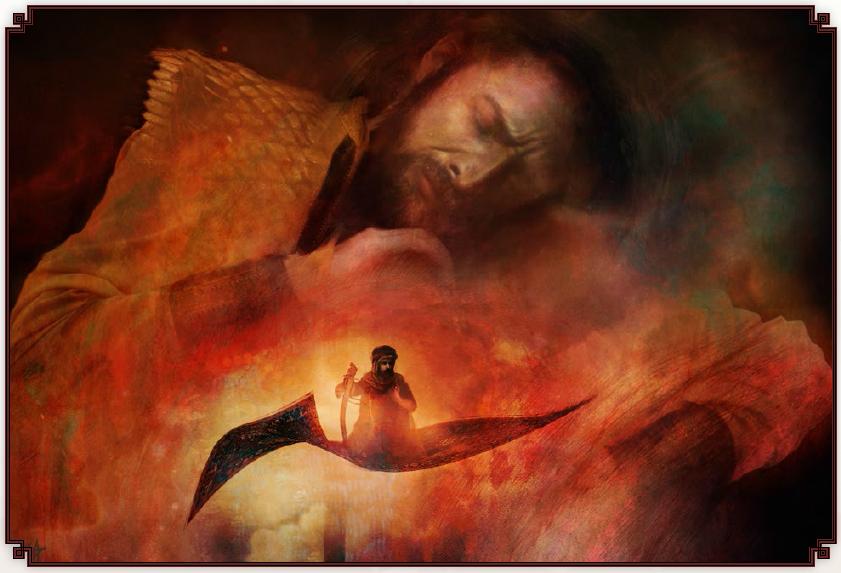
Level One – Ignis Fatuus: The user spends one willpower creates an illusion that affects one of the five senses. The vampire has to be able to sense the area they’re affecting so they couldn’t do it in a closed space they can’t see. They can for instance create sounds coming from the closed door since they can see the outside of it but they couldn’t make sounds coming from inside the room unless they could see in. The illusion remains as long as the vampire wills it or they leave the area.
Level Two – Chimaera: The user spends one willpower and a blood can create a static illusion that draws on all five of the senses. The illusion cannot move under its own power but can be moved. A sword for instance created by this power can be moved by the user and it will appear to be real to onlookers and those that interact with it. The sword though cannot deal damage at this level and will pass through the target since the illusion is strong enough to stand up but not enough to actually do anything besides exist in a static state. The illusion remains as long as the vampire wills it or they leave the area.
Level Three – Phantasm: The Cainite can spend a blood and make illusions with the previous powers, after spending the cost for them, that move on their own and make sounds. The illusion requires concentration to maintain if it does more than a repetitive task, something akin to making a fireplace video that’s on loop, and willpower check. If the check is failed, the illusion dissipates.
Level Four – Permanency: This power modifies levels one and two and makes them permanent until dismissed after expending a blood.
Level Five – Horrid Reality: The user spends two willpower and creates a powerful illusion that effects a target. The illusion can damage the target through a Subterfuge roll with the their Perception + Self-Control/Instinct as the difficulty. Each success inflicts one health level of unsoakable lethal damage on the target and the user can make it do less damage or bashing if they want to. Victims can escape the illusion if they’re convinced it’s not real and they heal all the damage inflicted upon them. If they are not convinced within 24 hours the damage wasn’t real, it stays to be healed normally. Horrid Reality can’t kill a target but will put them into torpor if they’re severely damaged by it.
Dementation
Dementation is the signature discipline of the Malkavians and it’s based on the channeling of one’s derangements. The user breaks down the barriers within their own mind through the derangement and unlocks power by journeying beyond the surface of their own insanity. You have to have a derangement to learn the discipline and learning the discipline gives you a derangement. If you lose the derangement, you lose the ability to use Dementation but can get it back, along with the derangement, by dwelling on their studies.
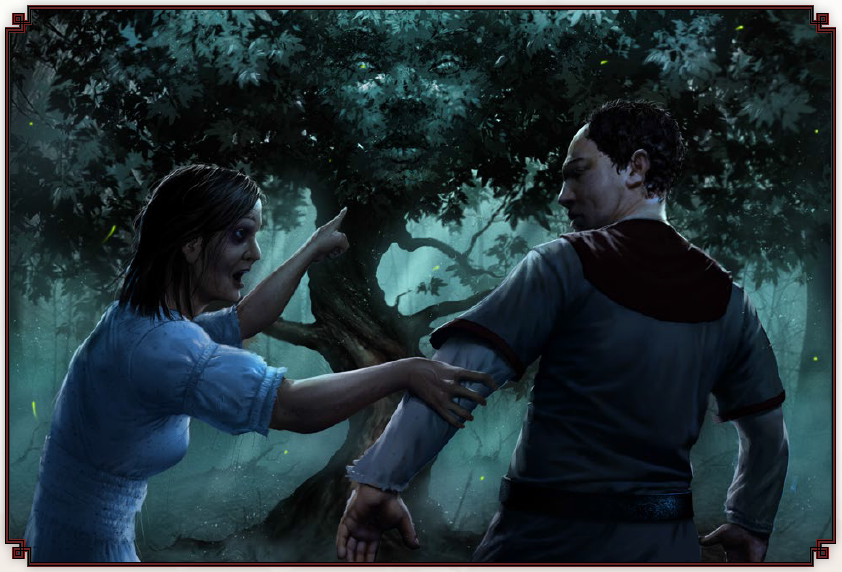
Level One – Incubus Humor: The user of this discipline can influence the emotional state of a target by inflaming one of the four humors. Sanguine influences courage, hope, and lust, yellow bile influences anger and hate, black bile influences melancholia, and phlegm neutralizes emotions.
Level Two – Soul Haunting: The user makes a speech to the target that causes sacred or profane urges to afflict the target. The urges manifest as visions, scents, and sounds that reveal the divine or demonic all around the target. The urges generally follow a theme related to the speech, such as angels or demons recounting personal details about the target. Even if the victim ignores the hallucinations, their trust in their senses is compromised as they fight with deciding what is real and not real. The visions are determined by the storyteller too, they do not require the user to know intimate details about the target for instance to have a demon hound them about their secret vice.
Level Three – Eyes of Chaos: The Cainite using this power can scrutinize the random patterns that exist around themselves to answer specific questions about the situation they’re in. These questions range from, “What’s the worst choice I could make?” and “How relevant to our overarching goals is this scene?” Difficulty is based on how much information the vampire has about the situation. A failure gives an answer unrelated to the question at hand and a botch gives a false, though believable answer to the question. The answers are not straightforward and based on what the user is looking at.
Level Four – Fire Voice: The user of this power makes a fiery, fear inducing speech to a crowd and induces Rotschreck in the target of this power. The number of targets is determined by the number of successes made on the roll and affects Vampires, mortals, and other supernaturals. Mortals do not get to resist. The frenzy lasts for a scene and an effect similar to Soul Haunting lasts for an additional night. The user of this power also has to test for Rotschreck but is at -1 difficulty to do such. If they botch, they automatically go into Rotschreck.
Level Five – Shedding the Mask: The vampire gains the undivided attention of a target for a scene and afflicts the target with 5 derangements, 1 for each humor imbalance and the Lunacy derangement. The number of successes determines the length, ranging from 1 success lasting 1 turn and 5+ successes lasting 1 year. On a botch, the user is hit by these derangements and probably put into torpor as 6 derangements puts a vampire into torpor. The victim can spend a number of willpower points equal to the number of success to cancel the effects of Shedding the Mask permanently.
Chapter Two and Chapter Five: The Clans of Caine and the Gifts of the Blood
Original SA post
Chapter Two and Chapter Five: The Clans of Caine and the Gifts of the Blood
Setites
Nicknames: Serpents, Followers of Set
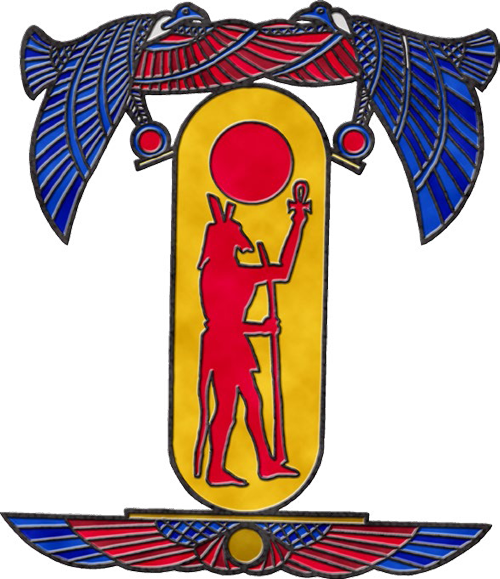
The Followers of Set are an independent clan in Masquerade and are firmly in the frenemy category when it comes to non-Setites. They’re essentially clan Thoth-Amon/Thulsa Doom, degenerate snake worshipping vampires who keep mortal cults but can do cool things like remove your heart and put it in a jar so you can’t be staked. The Setites, like the Assamites, are divided into variations based on doing certain jobs.
In the Dark Ages, the Setites are mostly a North African based tribe but are reaching out into other parts of the world. All that stuff about them being degenerate and evil is all Christian propaganda. You see, Set was the first vampire and all vampires descend from him. It’s due to the curse of Horus, the vile sun god, that vampires are harmed by sunlight the way they are. All the stuff about Caine is Christian lies and all the bad stuff about Set is due to the Hellenization of the Egyptian pantheon by the Ptolemais and was followed up by more garbage from the Romans.
The Setites want to spread the worship of Set to the rest of the world and undermine Christianity and Islam. They believe that Christianity and Islam will die out like other religions and they are only helping along the inevitable. Set is eternal and it’s only a matter of time before he comes back into style.
Most the Setites encountered in Europe are members of the priest caste. There are also warriors and witches. The write-ups for these factions are in the apocrypha like it was for the Assamites. These divisions aren’t really acknowledged officially and they’re not really talked about outside of Setite circles to give the illusion that the Setites are not divided. The Warriors of Glycon are the warrior caste/branch of the Setites. They have a big focus on might making right and enforcing the will of Set through force. The Warriors vie for dominance of the clan but it doesn’t look like they do such to the point of open conflict. They’re nicknamed Crooks because they’re pretty thuggish in their outlook and the way they handle things. The Witches of Echidna are the sorcerers of the clan and are nicknamed Gorgons. They’re based on a Cretan witch tradition that venerated the serpent at Knossos, which they believe is the progenitor of most snake myths. For as much as the Setites bitch about Hellenism, they’re based on a lot of Greek based traditions. The Witches, unlike the Warriors, serve the needs of the cult and don’t vie for leadership.
Appearance: The Setites are mostly made up of North Africans and Egyptians during this time period but will often embrace Europeans with red hair, it’s apparently seen as a sign of a blessing from Set. When they travel, they usually dress like North African merchants and when among their own in their temples, they dress like Ancient Egyptian priests.
Haven and Prey: Setites usually make havens underground in order to escape the sun and to maintain their secrecy. They will set up cults in abandoned temples that were buried underground due to time or in cave networks. If these aren’t feasible options, they make their havens where they can and will sometimes keep mobile havens in trade caravans. The Setites most often feed on the dregs of society because they don’t draw attention if they go missing.
The Embrace: The Setites usually embrace mortals from their Set cults and embrace the best among those cults. The most cunning and charismatic members usually get the promotion to vampire while the weaker members of the cult stay where they are in order to serve their betters. The majority of Setites are of North African or Middle Eastern descent but as the Setites expand into Europe, they are embracing more red haired Europeans. The Setites tend to be prejudiced against embracing Europeans because they view the Europeans as colonial, not my phrasing, their ahistorical use, aggressors for the whole Hellenistic period and Roman Empire thing.
Priest Clan Disciplines: Obfuscate, Presence, Serpentis
Warriors Clan Disciplines: Obfuscate, Potence, Serpentis
Witches Clan Disciplines: Animalism, Presence, Setite Sorcery (Thaumaturgy)
Priest Weakness: Setites take twice as much damage from sunlight. Damn you Horus!
Warrior Weakness: Warriors are power obsessed and they focus on one source of power above all others. They chose the source at character creation, such as military prowess, and whenever an opportunity presents itself to gain more power through that favored power source, they have to make a willpower check not to. Warriors must always accept an opponent’s surrender but the opponent must submit in some fashion, such as a blood oath. They’re super villains to the max.
Priest Weakness: When witches frenzy, they take on the visage of Echidna, one of the mothers of monsters in Greek mythology, and their appearance drops to 0. They take on the form of a snake demon from Greek mythology for the duration of the frenzy. When the witches consume or spend blood on something other than Thaumaturgy, Echidna takes a blood point at the end of the scene so they’re always spending or losing an extra blood point on those actions. Thaumaturgy doesn’t invoke this tithe because Echidna is apparently pleased by uses of Thaumaturgy.
Organization: Setites organize themselves along an ancient Egyptian temple model, with a high priest or prophet at the top. There will be subordinate priests underneath them relative to the size of the temple. Larger enclaves will have lots of mortal cultists and ghouled servants and retainers but smaller temples will only have a couple mortals as members. It’s all relative to the size.
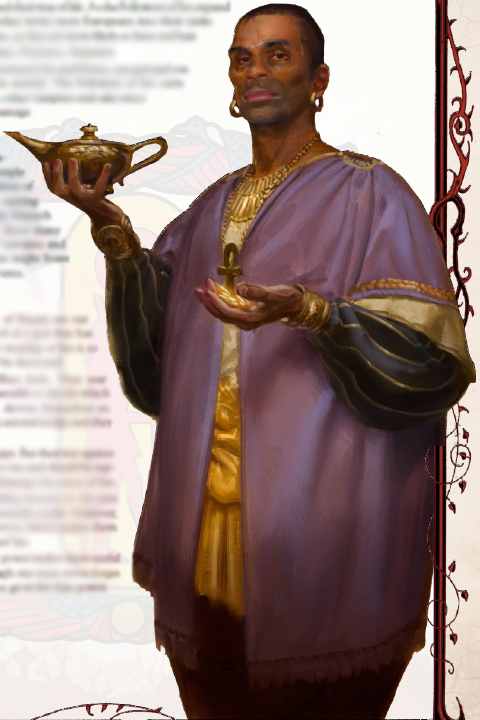
Toreador
Nicknames: Aesthetes, Artisans, Vanitas
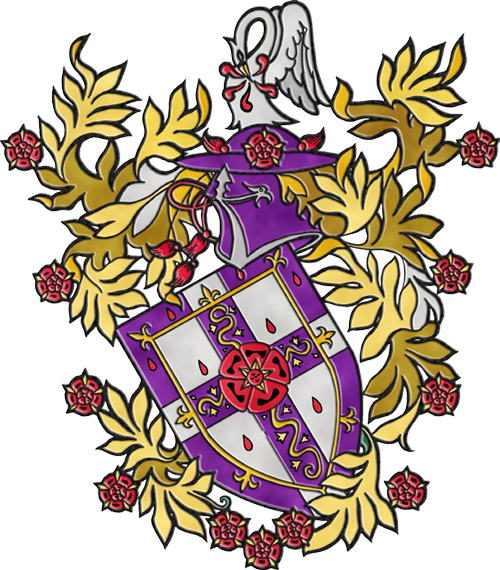
The Toreadors are a clan of hedonists and indulge in everything in excess. As the Renaissance is right around the corner in relative terms, the Toreador are on the rise. They revel in the drama of everyday life and feel that they are the directors while the mortals are the actors. Some engage in art while others engage in religion, always taking it to an extreme frowned upon by most in search of something they felt in life that they can no longer feel. Even if they were an artist in life for instance, they find themselves unable to achieve that certain something that made their art better than what it is now. This is traumatizing to the Toreadors but they still never stop trying to reach that height that they once reached in life.
Appearance: Toreador pursue and propagate beauty, trying to present themselves in a way that reflects the ideal beauty of their homeland or era. This can take different forms and a group of Toreadors is often a beautiful sight.
Haven: Toreadors surround themselves by not only art and beautiful things, they also seek out artists to sponsor or a patron for themselves. They curate everything they have, including retainers, making them obsessive, consummate collectors of everything.
Backgrounds: Toreadors embrace based on passion and conviction, often embracing a favorite artist, lover, or muse in order to keep them around forever. The Toreador flaws tend to cause them to abandon these childer when they grow tired of them. This often foster resentment and revenge plots.
Clan Disciplines: Auspex, Celerity, Presence
Weakness: Toreadors have a short attention span but once they view an object that triggers their sense of beauty, they become obsessed with it. They have to roll their Self-Control or Instinct or they are lost in their thoughts about their object of obsession. This obsession is addictive, a rush of pleasure that can leave an inexperienced Toreador reeling when the emotions leave them. This can need can be exploited by enemies as the Toreadors scrambles for their next fix. Toreador can interact with the objects of their obsession as well, which can be dangerous for a living being the Toreador is obsessed with.
Organization: Toreadors often meet informally engage in passionate debate of art, music, and theater. Sometimes performances and impromptu art galleries break out during these meetings. The art or works displayed can come from Toreadors or their protégés. Hot-tempered Toreadors will sometimes hold duels for the standard reasons or for amusement.
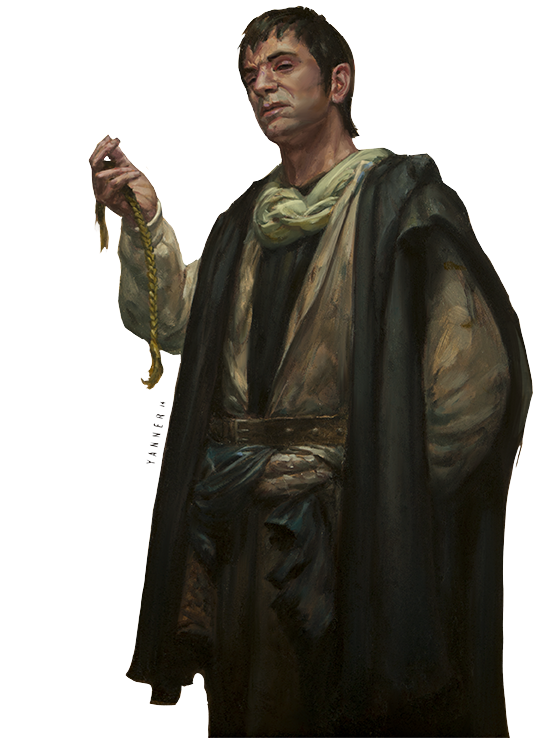
Ventrue
Nicknames: Power Mongers, Ambitiones, Patricians (derogatory)
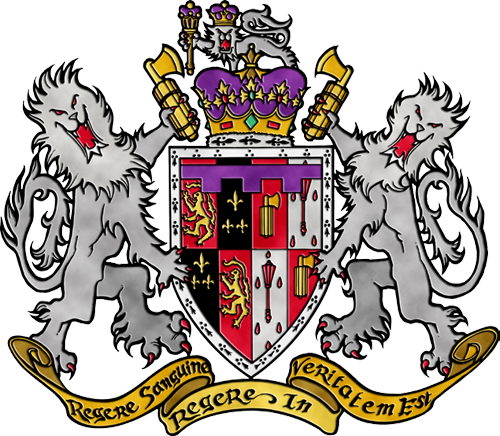
The Ventrue during this time are on the rise, having stepped aside and allowing the Lasombra to take a dominant, commanding position among Cainites during the Long Night. They are using the War of the Princes to take back what they feel is their rightful place as the leaders of the Cainites.
The Ventrue place a great importance on lineage and trace their lineage back to Caine himself, Ventrue being a childe of Enoch, King of the First City and first childe of Caine. The Ventrue are a clan of warrior kings and merchant princes who pulled the strings behind the scenes in Rome centuries before. They value fortitude and charisma and often actually care more about their mortal subjects than other clans. They often work as arbiters and mediators for other kindred due to their discipline set making it very easy for them to keep the peace without using force. The Ventrue believe that leadership is their gift and their burden. They disdain the rule of the Lasombra and are biding their time before they rise at the right moment.
Appearance: The Ventrue always dress impeccably, always in bespoke, high quality clothing. They always dress appropriate to their station. The clothes, even if not having intricate designs, will be appropriate to their station and always make sure not to outshine the people they’re manipulating.
Haven: Ventrue prefer to make their havens in population centers or strongholds with plenty of resources for them to draw upon. The Ventrue seek out populaces due to their desire to lead and their feeding restrictions.
Backgrounds: Ventrue are very specific about who they embrace. They put a great deal of importance on education, background, and talents, leaving them to embrace people from the aristocracy and upper echelon of society. They never embrace by mistake, I imagine if they did the childe would be destroyed, and train and educate their childer. Purity of bloodlines is preferred, as was the fashion in aristocratic circles, but Ventrue from commoner backgrounds do happen but have to work much harder to rise through the ranks.
Clan Disciplines: Dominate, Fortitude, Presence
Weakness: Ventrue can only gain sustenance from feeding from a specific group chosen at character creation, such as merchants, French, Catholics, and small children. They can consume mortal blood from outside their specific group to forestall frenzy but they gain no sustenance from it. This means they don’t replenish their blood pool.
Organization: The Ventrue organize themselves feudally, in a top down, hierarchical structure based on family lines and generation. Blood oaths are the common and most popular way of maintaining loyalty to this hierarchy.
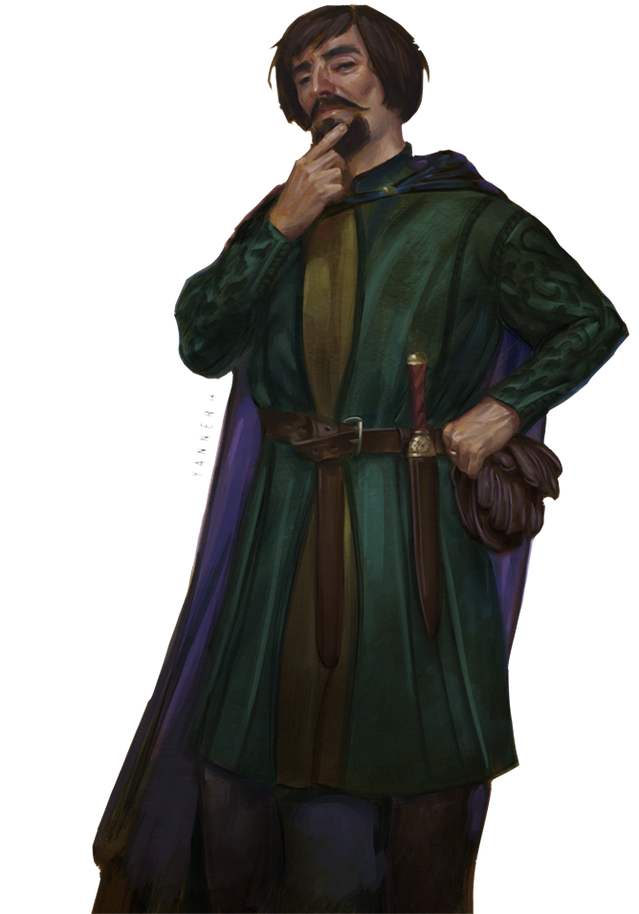
Disciplines
Serpentis
Serpentis is a family secret among the Setites and it’s not commonly used around outsiders in order to give it an air of mystery. The name is a bit misleading because it’s not so much about snakes but about taking on traits of Typhon and Echidna. The clan is at a bit of a loss why it’s all based on Greek monsters but they reconcile it with being part of some type of ur-myth that goes back to Set.
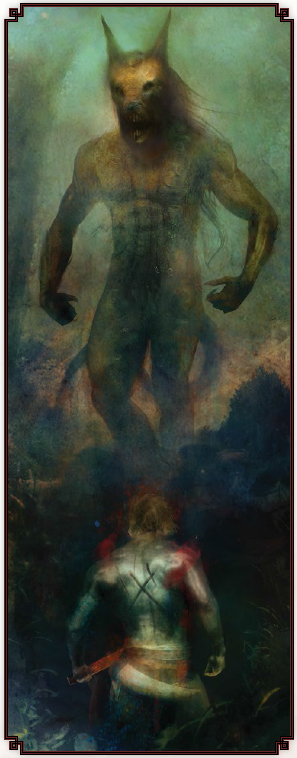
Level One – Enchanting Gaze: This reflexive power lowers Social roll difficulties for the Setite as they change their eyes to be more serpent like or their skin to be pearlescent to entrance a target and draw them to them. The user can lock eyes with a target and entrance them, only breaking the hold through a roll or knowing that they’re clearly endangered.
Level Two – Typhonic Maw: The user distends their jaw, enlarges their fangs, and elongates their tongue by spending a blood. The vampire can attack targets with their tongue, which can draw blood from a target like a bite due to a proboscis on it. The tongue also takes away all darkness penalties from the user. The vampire can bite without a grapple check, doing an additional die of damage, and can draw five blood points a round instead of three with their mouth.
Level Three – Serpent’s Flesh: The Setite spends a blood and makes their flesh leathery, slimy, scaly, or monstrous in some other way. The Setite reduces soak difficulties to 5, can soak aggravated damage not from fire or sunlight with Stamina, can slip through any opening as large as their head, and can reflexively escape any grapple. The user can spend a willpower while activating it to make it subtle but if they don’t, Intimidation is easier due to being monstrous.
Level Four – Typhonic Avatar: The vampire transforms into a Typhonic beast or half-serpent person by spending a blood, though can be sped up by spending blood, and four blood points makes it reflexive. The user has to decide on the form and it becomes permanent for them, although they can purchase the other form later on by half the cost of the power. The vampire gains two dots to Strength, Dexterity, and Stamina. The vampire moves twice as fast, does two additional damage when biting, and increases the user’s balance. The tail gained as a serpent person can be used to attack and gains five dots to strength instead of two. The form causes awe in mortals and they have to flee or subjugate themselves to the Setite if they have a lower willpower than the Setite’s Serpentis dots. Mortals can act by spending a willpower.
Level Five – Mother of Monsters: The Setite can create monsters from their flesh with this power. The Setite spends a blood and additional blood points to give the beast a blood pool if they want to and marks off a health level. The beast takes on the visage of a mythological monster, has childlike intelligence, and will carry out their creator’s commands without question. The creature cannot be commanded by others or frightened. The beast can heal damage with blood given to them or activate level 1-4 Serpentis powers. It takes a turn to birth the monster and the beast can be reflexively subsumed back into the vampire, with any unspent blood, and the lost health level is regained.
Setite Sorcery Rituals
There are no paths for Setite Sorcery in the book, there are are two rituals. Setite Sorcery is present in V20 Tome of Secrets though so we'll get to it one.
Level Three: Displacement of the Pneuma: This ritual takes 20 minutes to cast and requires a mortal target and an animal, like a goat or pig. The caster binds the mortal target upright, cuts their wrists, and ritualistically pretends to slit the throat of the target with a dull knife. The Setite bleeds on the chest of the target, making them believe momentarily that they’ve had their throat slit, and yells a word of power as loudly as they can into the victim’s ear. This causes the target’s soul to leave their body and enter the animal’s body, where they will be trapped for the animal’s lifespan. The target’s human body is inhabited by a shadow of the mortal, having a semblance of the mortal’s intellect but with no memory, desire, or willpower. This makes the target very suggestible but incapable of interpreting complex commands. They will also not drink or eat unless ordered to because they are effectively a zombie and have no survival instincts.
Level Five: Cheat the Scale of Hades: This ritual is done during the dark of night when no moon is present, due to not rising yet, setting, or due to the new moon and takes 3 hours. The target ritualistically removes their heart, liver, and brain and falls into torpor. This process invokes Rotschreck in onlooking vampires. The user makes extended checks, each check representing an hour and requires 12 successes, so at least 4 an hour to be successful. If the moon or sun rises, the ritual fails. After the organs are removed, the vampire is locked in a scaly cocoon. The vampire is impervious to damage at this time but is in indefinite stasis. The organs are vulnerable during this time and destroying the organs causes an unsoakable level of aggravated damage. If the heart is exposed to fire or sunlight, the vampire is instantly immolated. The user has to be fed their removed organs to be awakened. After ingesting them, it takes one minute for the cocoon to crumble and the vampire to emerge. The ritual can be performed on another vampire and the heart can be left out. If the heart is left out, the vampire is immune to staking and diablerie. The vampire is also two lower on frenzy checks due to not having a heart to dictate their emotions. The separated heart is a powerful sympathetic ritual component and the vampire in question can be instantly destroyed by exposing their heart to fire or sunlight. A stake through the heart puts the vampire into torpor and drinking from the heart allows a vampire to diablerize the owner and to do such at a lower difficulty.
Chapter Two and Chapter Five: The Clans of Caine and the Gifts of the Blood
Original SA post
Chapter Two and Chapter Five: The Clans of Caine and the Gifts of the Blood
Tremere
Nicknames: Usurpers, Tremores (“the trembling ones”)
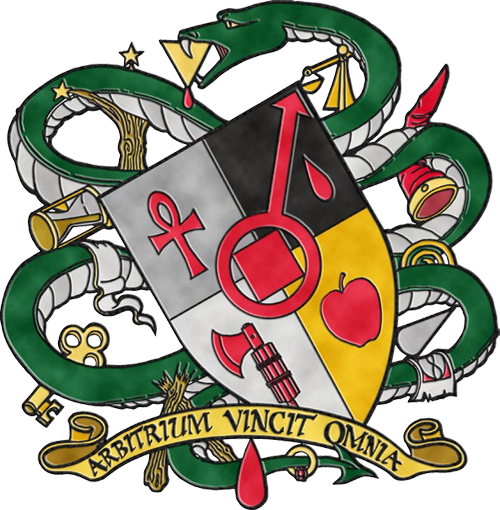
The Tremere are the newest clan on the scene during the Dark Ages and most Cainites aren’t really happy about this. The Tremere were hermetic Mages, members of the Order of Hermes, who saw the writing on the wall as magic started to wane and were looking for a way out. Tremere, the founder of House Tremere of the Order of Hermes, decided the way around this and to prolong his own life was to make his house into vampires. This is an irreversible process, you can make yourself into a vampire in the WoD but you can’t make yourself back into a mortal or a Mage. This caused an outrage among Hermetic mages because Tremere forsake the possibility of enlightenment, ascension as it’s known in the line, for flawed immortality and lesser power. Vampires weren’t too happy about that due to the needing of vampires for the potion that made them into vampires and the possibility that Tremere diablerized an antediluvian, Salubri. He did but they’re doing their best to cover it up.
From the word go on their vampire project, the Tremere have been in conflict with the Tzimisce in Eastern Europe and have had to engineer their own discipline, a combination of Hermetic magic and the power of Cainite blood, Thaumaturgy. Thaumaturgy, which is very developed at this point and powerful, has alienated the Tremere even more because of views on witchcraft. There are rumors of blasphemy and diablerie being carried out by the Tremere in their hunt for power, which is only half true. The Tremere have been trying to gain allies in order to survive and have found one in the Ventrue, who are willing to work with the Tremere for magical protection in the War of the Princes.
The Tremere are operating very much like they did as mortal Mages, having a top down, pyramid shaped organization that goes back to Tremere. Seniority is determined by age and experience and younger vampires are beholden to older vampires. They are very impulsive as vampires, making moves with only the short term in mind and immediate benefits considered. Decisions the clan makes during this period will come back to haunt them and bite them in the ass, like the Gargoyles, which we will discuss with the other bloodlines.
Appearance:The Tremere tend to dress simply and practically, to blend in and not draw attention to themselves. They take on the attire of the area, for instance in a university town they might dress like simple scholars or in the countryside like Franciscan monks.
Haven: The Tremere like to make havens in cities, preferably ones with universities or cathedral schools. If they’re in a good position with the local Prince, they try to dwell by these schools but if they are in a bad position, they are usually relegated to the slums or ghettos. If they live in the countryside, they construct small, secure lairs where they can do their research and they will try to construct it by a place of power.
Backgrounds: The Tremere will embrace anyone who is hungry for both knowledge and power, usually alchemists, occultists, theologians, and other scholars. They don’t really care about age or religion but they expect members to follow the rules of the clan and accept the clan’s Hermetic-Neoplatonic theories if they want to learn Thaumaturgy. You don’t have to learn Thaumaturgy as a Tremere but there’s no real way to advance within the clan without learning it and these Tremere are closely watched. An example of this is the embracing of warriors by the Tremere to fight against the Tzmisce on the basis of these warriors being a good fighters and not because they are a good fit for a monolithic organization of Hermetic sorcerers.
Clan Disciplines: Auspex, Dominate, Thaumaturgy
Weakness: All Tremere are very susceptible to blood oaths due to the process used by the clan to become vampires. What would be one blood bond step for other vampires is two for them, meaning they are completely bound to another vampire at two draughts of blood instead of three. All Tremere must surrender a vial of their blood to the Council of Seven, the governing body of the clan, which they store in a vault of their Carpathian headquarters chantry. If a Tremere disobeys the clan, goes rogue, or betrays them, the Council of Seven can use this blood to exact revenge on that Cainite.
Organization: The Tremere are set up as a pyramid, with the Council of Seven at the top, 7 Domain Regents beneath each Council Regent, 7 Chantry Regents under each Domain Regent, 7 Chantry Regents under each Domain Regents, and 7 Chantry Apprentices under each Chantry Regent. The clan is a meritocracy and an apprentice can move up the pyramid in time if they can demonstrate their occult power and can survive the threats from within and without the clan.
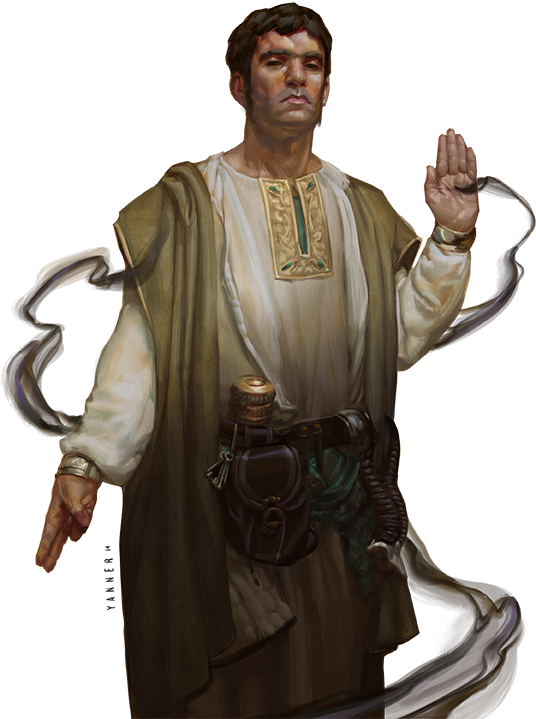
Discipline
Thaumaturgy
Thaumaturgy as covered here is the invention of the Tremere. There are clans that have their own variation of it, the Assamites and Setites, but most of the paths in this book were created by the Tremere. The Tremere were Hermetic mages in life, well at least the founders, and they created this discipline by combining their previous magical research and systems with vitae. There’s a sidenote box that talks about Tremere have theorized that vitae represents prima materia, the pure matter that all other things are generated from. It can be shaped and formed by the user but is destroyed by the elements of nature that represent clarity and perception, the sun and fire. Both of these force vitae into an inert form as they show the mind what the form of things is. In this way they’re pretty much taking vitae and using it in place of quintessence, which is the generic power source of Mage the Ascension. This is in a lot of ways a bastardization of true magic. Thaumaturgy is also static, unlike awakened or true magic, in that use of the powers is always the same when used successfully by a Cainite. The level 3 power of the Path of Whatever will always be the same regardless of generation, other than pumping more blood into it to make it last longer or having a stronger effect.
The Tremere consider Thaumaturgy to be a clan secret and severely punish any Tremere who shares its secrets with outsiders. They are aware that some other clans have older arts similar to Thaumaturgy but they know their version is far superior to the others and could be their key to supremacy.
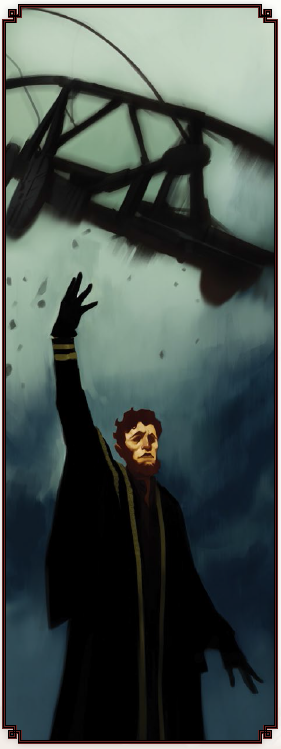
The Lesser Paths
These paths are beginner paths and usually control a certain thing or invoke a certain effect. The levels of the discipline just mean the caster can invoke a stronger effect or one that has a greater scope of effect.
Creatio Ignis (The Creation of Fire)
The caster conjures a flame from the palm of their hand that sheds light but produces no warmth and does not provoke frenzy in other vampires while the caster still holds it. Once the fire is released, it becomes normal fire and deals aggravated damage like normal fire. Every success made on the roll increases the range it can be thrown by ten yards. If the roll is botched, the fire goes to the closest flammable object within 10 feet and if none are present, it ignites the caster for 1 aggravated damage before it goes out. Level 1 of this power produces a flame the size of a candle flame and the 5th level of this power generates a raging inferno.
Iter Pernix (The Swift Journey)
This power allows the caster to instill targets with the fortitude to move along roads at a speed of 30 MPH for a number of hours equal to the successes rolled on the spell. It doesn’t affect movement in combat, only long distance travel. A botch has the opposite effect, causing slow movement and mounts to become unwieldy. Level 1 of this power only affects 1 being but the fifth dot allows up to 48 mounts, 16 supply wagons, or 4 siege engines to be affected. It may not seem that powerful but at Level 5 it can be pretty useful to an army.
Potestas Motus (Power of Motion)
This power allows the caster to lift and manipulate items from a distance. The items are controlled as they were held and weapons can be used as such as long as they’re within the Cainite’s line of sight. The caster can use the power to lift themselves and others through the air and violently hurl items with a greater speed and force than they are physically capable of. Each success allows the user to manipulate an item for one turn and the control can be continued with a willpower roll. If the initial test achieves 5+ successes the effect lasts for a scene. At two dots the user can use a weapon with the power, rolling melee + Thaumaturgy for attacks with their strength being their level of Potestas Motus. At 3 dots the caster can lift themselves or another and fly at their unmodified running speed. If the target is unwilling, they can be lifted after an opposed willpower roll each turn. If the roll is botched, the caster is rooted in palce, unable to move or dodge for a turn. 1 dot in this power allows the caster to lift 1 pound and 5 dots allows the caster to lift 1,000 pounds.
Potestas Tempestatum (Power Over Storms)
The caster can influence and control the local weather. The number of successes made on the test determine how quickly the desired phenomenon can be conjured, with 1 success being a gradual shift over 24 hours and 5 successes being an instantaneous change. Minor changes or influencing changes that build upon existing conditions are easier while unnatural changes are more difficult. Rolls indoors are always more difficult and can only effect the weather outdoors, you can’t make a storm inside. Changes last for 1 scene per success before reverting back to normal. A botched roll on this power causes the local spirits to lash out at the caster, causing adverse weather effects to impact the caster, making their Perception and ranged attack rolls more difficult. This can be stopped if the caster spends a point of willpower to compel the spirits to stop. Conjured lightning will strike the caster on a botch. Level 1 involves the summoning of fog or light breezes, which obscures perception and shortens weapon ranges, and minor temperature changes, while level 5 allows the caster to summon a thunderstorm, roll Perception + Occult to strike a target with lighting for 10 dice of lethal damage. It might seem weak but at level 5 it can be quite potent.
The Greater Paths
Thaumaturgy is not like most disciplines, which in a fashion come naturally to vampires or vampires of a specific clan. You can’t learned Thaumaturgy through practice and force of will, it takes careful study. This is one of the reasons why Tremere require students to learn a lesser path before learning the greater paths because they are a series of related powers unlocked through mastering common techniques.
Potestas Elementorum (The Power of the Elements)
The Tremere are no longer able to command spirits as they did as Mages but can call upon elemental spirits in a limited manner through this path. It’s a popular path among Tremere in rural areas because the exploration of nature is easy and accessible but it is useful everywhere.
Level One – Strength of the Earth: The caster can temporarily assign three points between Strength and Stamina for a number of turns equal to the successes rolled. It can be extended for a willpower point and ends instantly if the caster is separated from the Earth.
Level Two – Wooden Tongues: The caster can converse with the spirit of an inanimate object, who can tell the caster details about events that transpired in its presence. One success gets you a few details about a major event while five gets you a detailed description of events that transpired.
Level Three – Animate the Unmoving: The thaumaturge can animate an inanimate object, up to a number equal to their intelligence score, in a fashion similar to Fantasia. Objects can move themselves but not in a way that radically deviates from their structural makeup, a statue can slowly move but can’t do parkour. Each success allows the object to move for an hour as long as it’s within line of sight.
Level Four – Elemental Form: The caster transforms themselves into metal, dirt, stone, air, liquid water, ice, or fog. 1 success keeps the caster’s original shape as though solid, 2 successes allows the caster to mimic a natural formation of the element, and 3+ successes allows the caster to use their disciplines in that form. It lasts until sunrise unless dismiss and any major disruption of the form does bashing damage but can’t break it’s coherency. You couldn’t separate part of the body and take it away for instance, the substance will just seep from the container and rejoin the caster.
Level Five – Summon Elemental: The caster can summon a classical elemental, a sylph (air), gnome (earth), salamander (fire), or undine (water). The spirit is difficult to control and can possibly attack the caster. The thaumaturge has to be close to a source of the element to call the spirit and then must bind the spirit after summoning it. The higher the successes on the summoning, the stronger the spirit and commanding the spirit has a difficulty equal to 4 + the number of successes on the summoning roll. If you botch the roll, the spirit attacks the summoner, a failure results in the spirit leaving or attacking, on 1 success the elemental does not attack, and on 5 successes it will perform any task it’s commanded to do, even if it takes several nights or is dangerous to the spirit.
Potestas Execrabilis (The Accursed Power)
When the Tremere were awakened Mages, they looked down on common witchcraft and curses. They believed themselves about such things but now that they’re vampires and bogged down in several wars of their own making, curses are great! In order to use these powers, the caster must be in the presence of the target and loudly proclaim the curse at them. It doesn’t matter if the target understands the curse, just that it’s said at them. The caster also needs a part of the victims being, such as hair, blood, or something else of that nature. The victim can overcome the curse with a difficulty 7 willpower roll, not hard for an elder vampire but your average mortal is going to have some trouble.
Level One - Stigma: The target is surrounded by an aura of wrongness that makes Social actions more difficult.
Level Two - Malady: The target’s Strength, Dexterity, and Stamina Pools are reduced by 1 per success, up to 3, for a number of nights equal to the caster’s Willpower as the target is afflicted by a mystery malady. This can be psychologically damaging to vampires as they’re afflicted by something vampires aren’t, sickness. Each Willpower test to shake off the curse removes 1 -1 penalty to their Physical Attributes, so if it’s -3 it takes 3 successful tests to shake the curse. If all of the penalties aren’t removed in a single night, they reset the following night.
Level Three - Scapegoat: For one night per success, the target is perceived as an enemy or rival by those they interact with. This doesn’t preclude violence against the target but it does make interacting with other difficult and more dangerous.
Level Four – Corrupt Body: The target is physically changed, wracked by a malady that reduces their Strength, Dexterity, Stamina, or Appearance to 1 and reduces all their dice pools by 1. When the transformation happens, the target’s dice pools are reduced by 3 for 3 turns. When cast, the number of successes determines the length of the curse, 1 success equaling 1 night and 5 successes equaling 1 year. The target resists at the time of casting, each success limiting the successes of the caster on a 1 for 1 basis. After that, the curse cannot be resisted until its run its course.
Level Five - Acedia: This curse is incredibly powerful and causes bad luck and misfortune to infest the target’s pathetic soul for all eternity. It requires a difficulty 8 Willpower challenge to resist is and if the target botches and the caster gains 3 successes, the duration is permanent. Every success is reduced by 1, meaning no successes is a botch, and no automatic successes are allowed. The maximum number of successes they can obtain is 2, even from successes given by Willpower or other sources.
Potestas Vitae (The Power of Lifeblood)
This path was one of the first paths created by the Tremere in their quest to understand vitae and control it better. It’s also the path they’re most well-known for and other Cainites expect this path when they hear the name Tremere and mention of blood magic. The Tremere at this time are very susceptible to blood bonds so use of some of these powers against others can be quite dangerous for them.
Level One – A Taste for Blood: The vampire consumes a drop of blood and can determine an amount of information on the target based on how many successes the caster makes. Although it is only a drop, the use of that blood with this power counts towards blood oaths. With a vampire you can determine what their relative generation is and the size of the source’s blood pool. At 5 successes they can gain detailed information about all aspects of the vitae. On mortals they can determine the mortal’s health or if they’re a ghoul. The caster can also determine if the target is one they’ve tasted from before.
Level Two – Blood Awakening: The caster, after touching the target, activates a targets blood, each success equaling 1 point to be used for healing or raising a Physical Attribute in a way the caster chooses. The difficulty for the target to resist frenzy is also increased by a number equal to the number of successes made by the caster, making it possible for the target to frenzy in situations where such wouldn’t normally happen.
Level Three – Inner Vessel: The caster temporarily lowers their generation by concentrating their blood. This is an artificial change and does not affect the generation of childer embraced while using this power or generation gained from diablerie but does affect Dominate. The successes made on the activation test are divided between generation, one lower per success, and duration, one hour per success. If no successes are put towards duration, it only lasts a scene.
Level Four – Theft of Vitae: The caster pulls vitae from a target who can be up to 50 feet away. One success equals one blood point and each blood point is automatically added to the caster. The blood is ripped from the target, being drawn from their orifices, and each success deals a lethal damage to a mortal this power targets. Excess blood is dropped at the caster’s feet and any blood consumed is counted as step towards a blood oath.
Level Five – Cauldron of Blood: The caster touches the target and causes their vitae to burn up inside themselves. In combat this requires a Brawl roll and 1 success instantly kills a mortal. With vampires, each success equals 1 aggravated damage and destroys 1 blood.
I will post rituals next, there are a lot, and a write up on some Malkavian stuff I missed from the apocrypha section. After that I just have the Tzimisce, there is a good deal of content, and then the clans and clan disciplines will be done.
Chapter Two and Chapter Five: The Clans of Caine and the Gifts of the Blood
Original SA post
Chapter Two and Chapter Five: The Clans of Caine and the Gifts of the Blood
Malkavian Orders
I forgot to include this in the previous write up of the Malkavians but this is from the Apocrypha of the Clans sections. It’s not very indepth but gives you an idea of how the orders play out. The orders given also get a special ritual that helps them with their focus. They're nothing crazy
 but I wanted to include them for completeness.
but I wanted to include them for completeness.The Ordo Aenigmatis
The Order of Enigmas believe that math holds the secrets of the universe and it can allow them to understand the greater significance of things or to find the word of God.
They recognize:
1. Symbols Exist everywhere.
2. Not all symbols are relevant.
3. All symbols are important.
4. Every Enigmatic bears part of the load.
5. One cannot decipher all symbols.
6. Some symbols are too dangerous to decipher.
7. No symbols are too dangerous to decipher.
The Rite of Enigmas: After one hour of intense study, spending a Willpower, and making an Enigmas test, the Malkavian may ignore their Derangement for the night and gain +3 dice to Enigmas rolls. The difficulty of using Auspex and Dementation goes up by 1 for the night as they fight to maintain focus and not fall into their Derangement.
The Ordo Esctasis
The Order of Ecstatics believe that they can gain a greater understanding of the primordial elements of the universe by goading, punishing, and stoking their beast through hedonism, passion, and physical torture.
They recognize:
1. All things are one.
2. The body is a prison.
3. Prisons keep us from knowing all things.
4. We can distract the prison guards by shaking the bars.
5. We can escape.
6. We must always return.
7. Sometimes, we never return.
The Rite of Ecstasy: After engaging in an hour of pain, sexual activity, or sensory overload, spending 1 Willpower, and making a Willpower roll, the difficulties involved with using Auspex and Dementation by 1 for the night. During this period the Malkavian in question cannot spend Willpower and cannot ignore their Derangement.